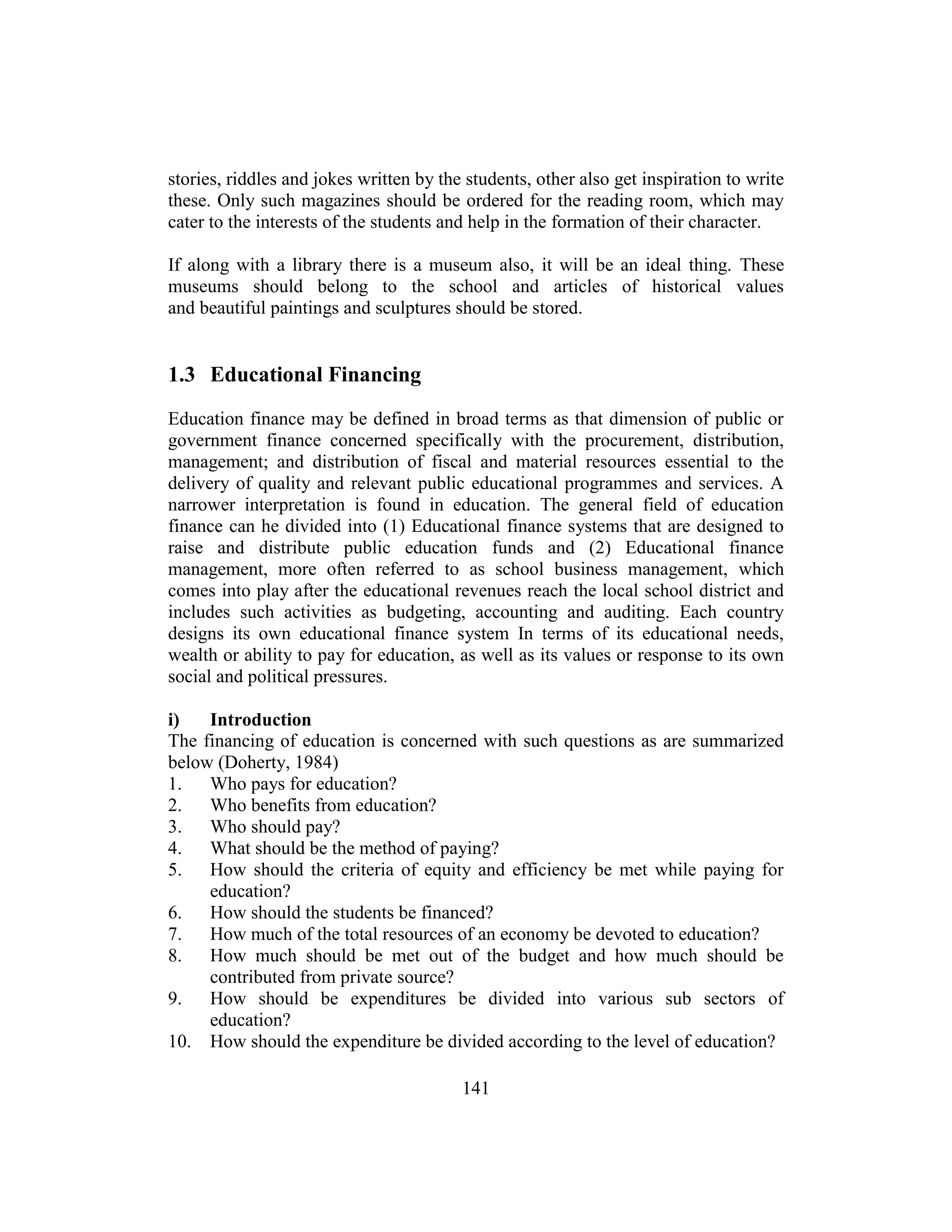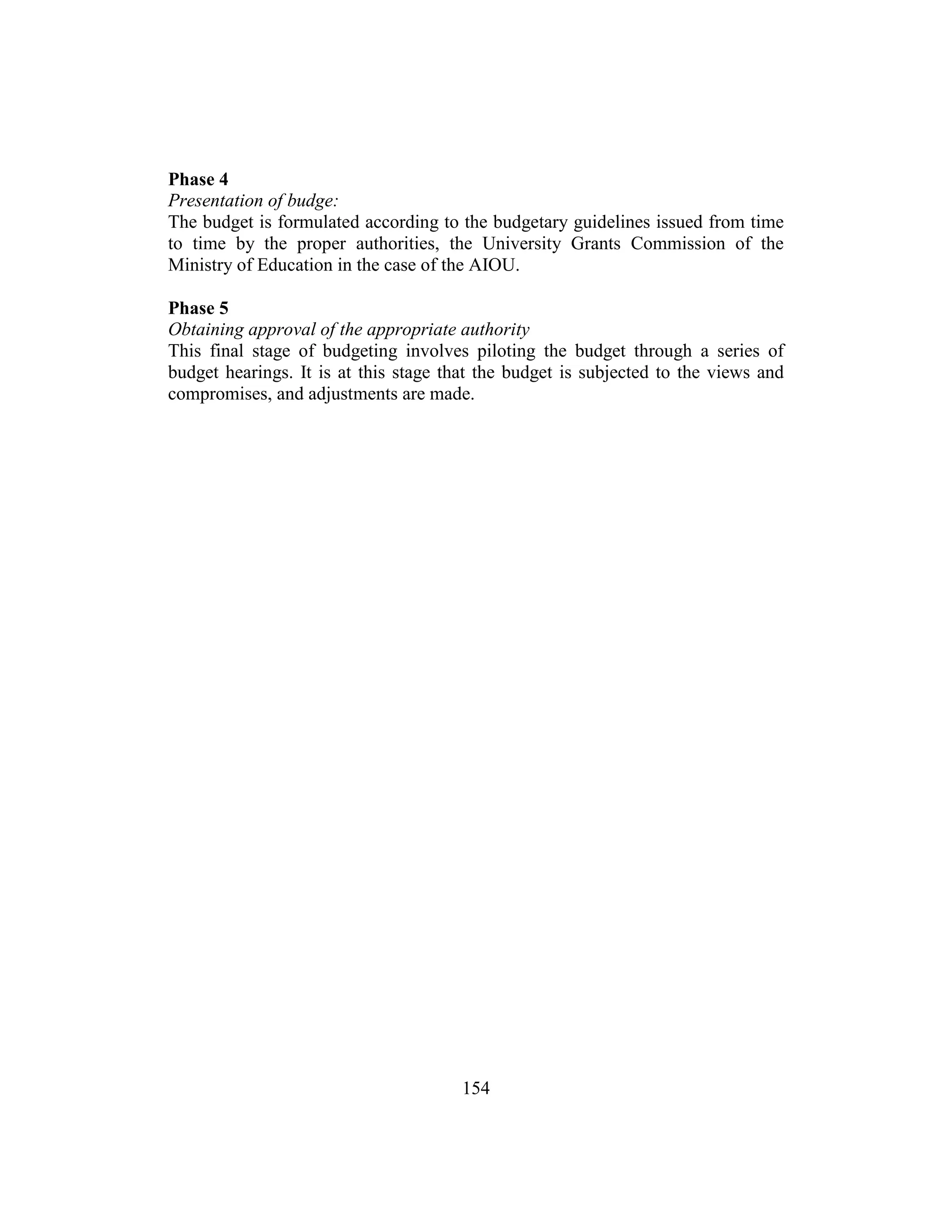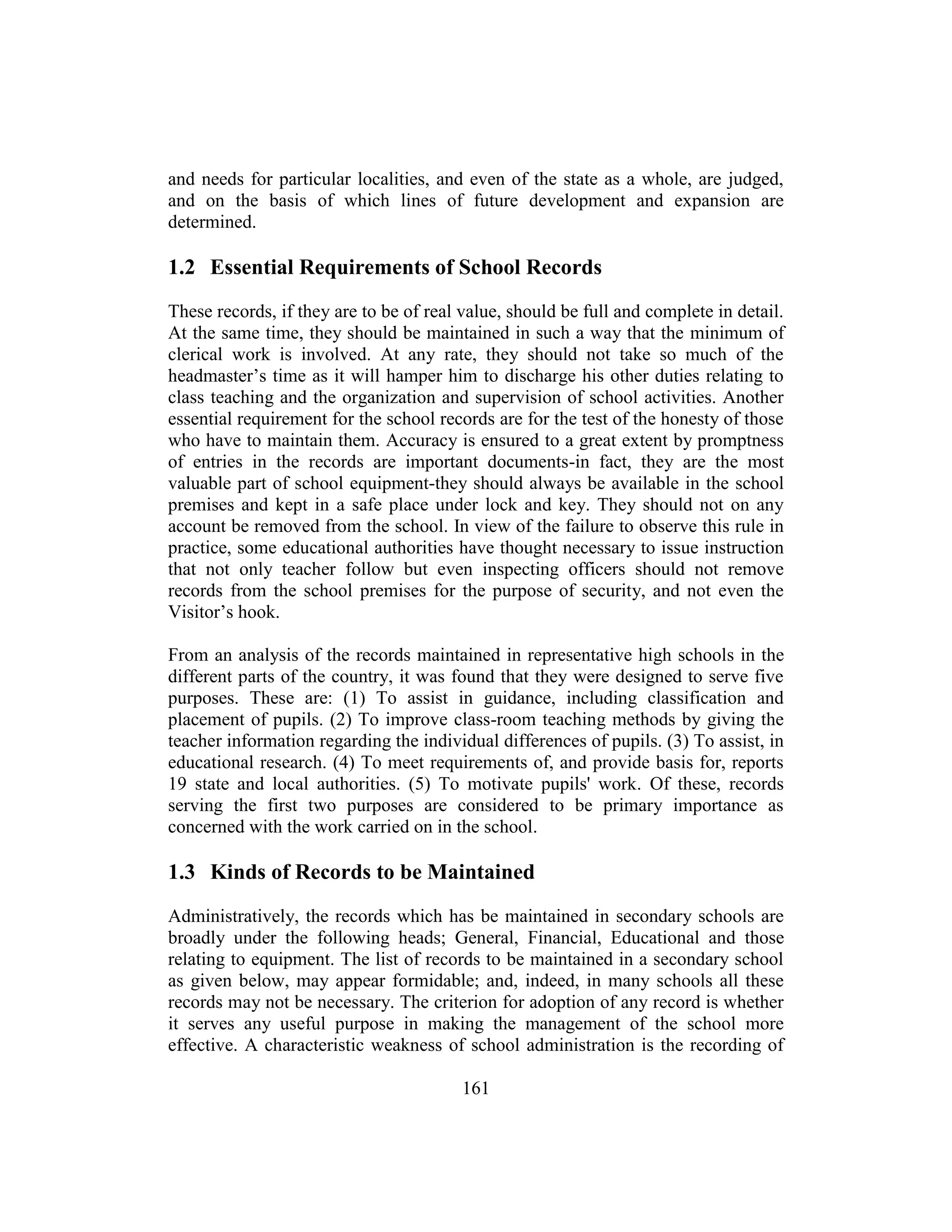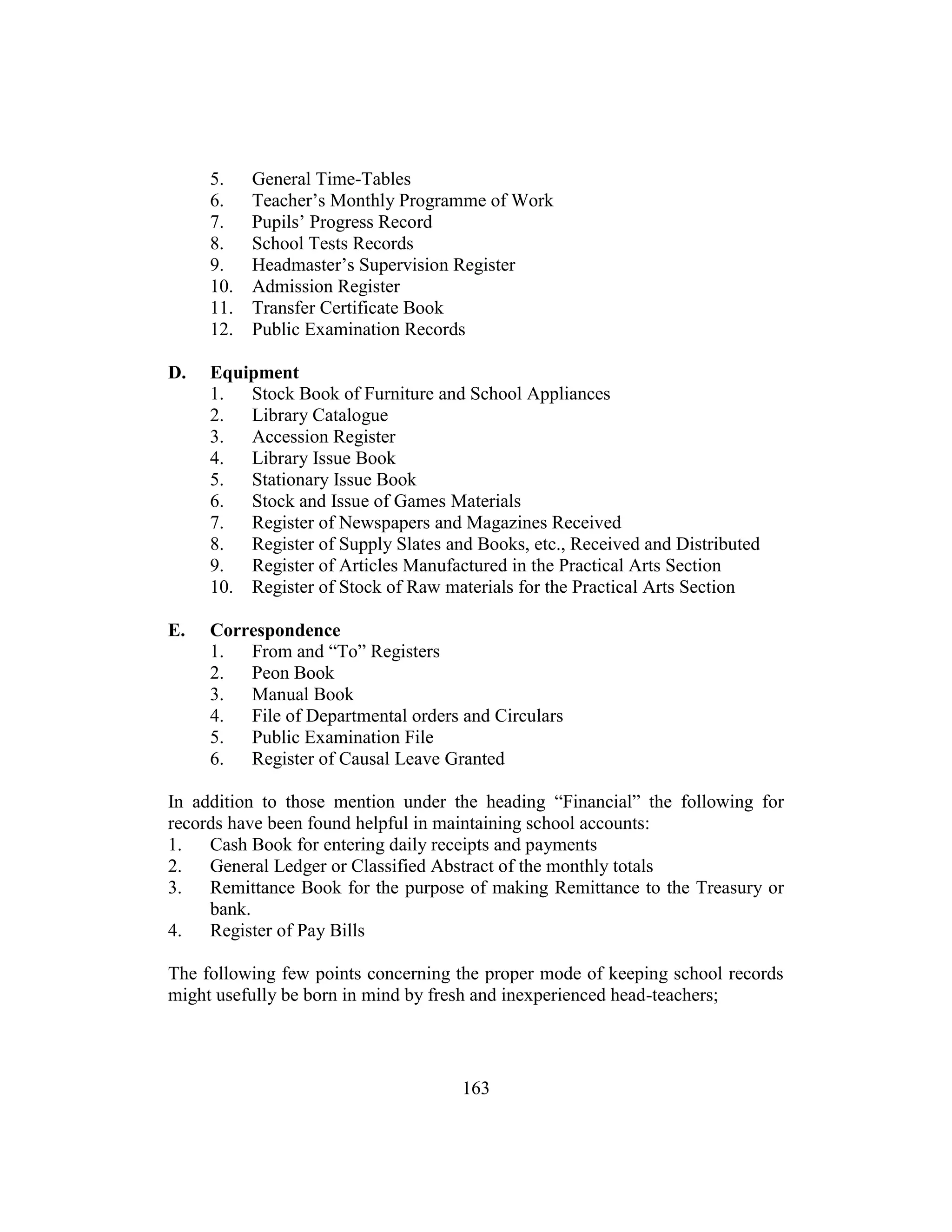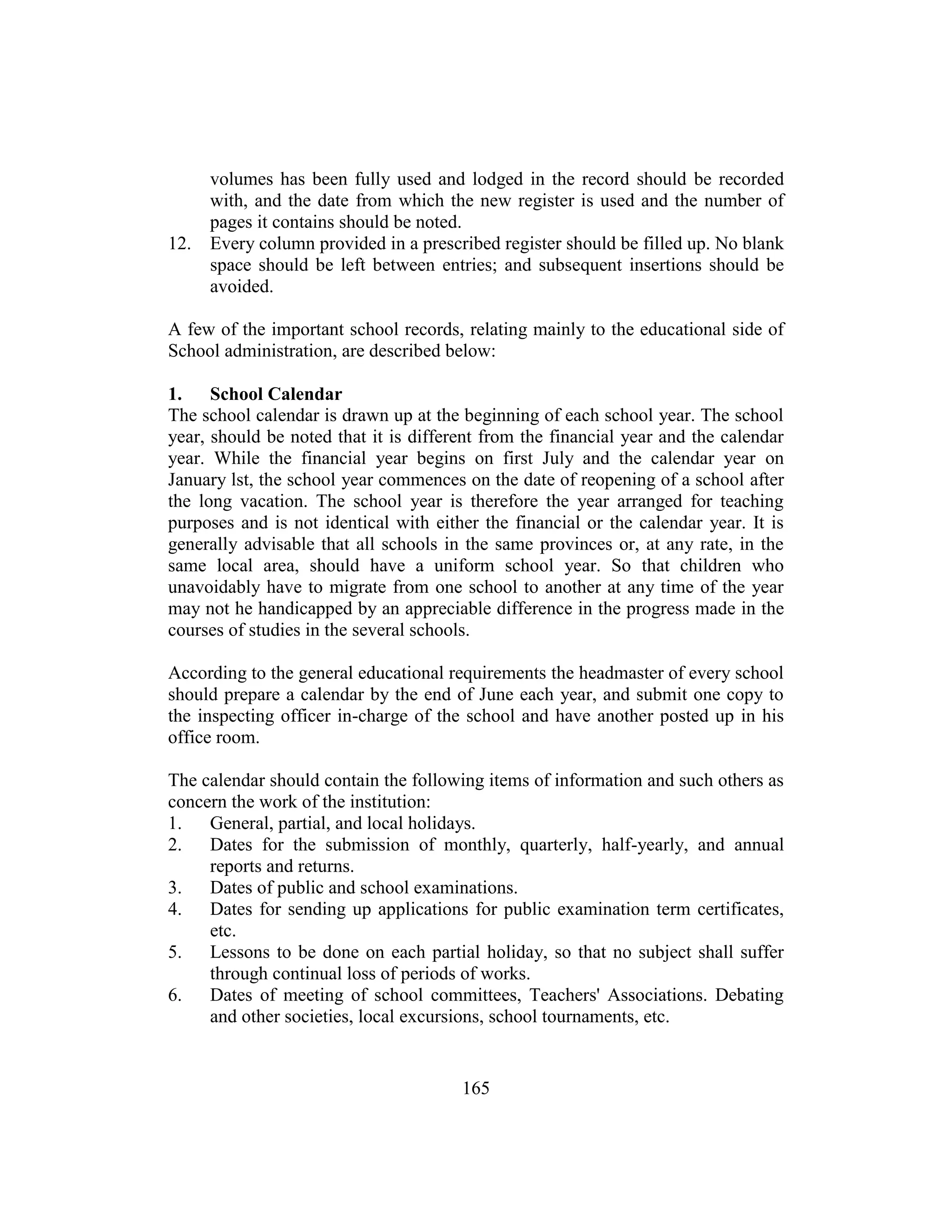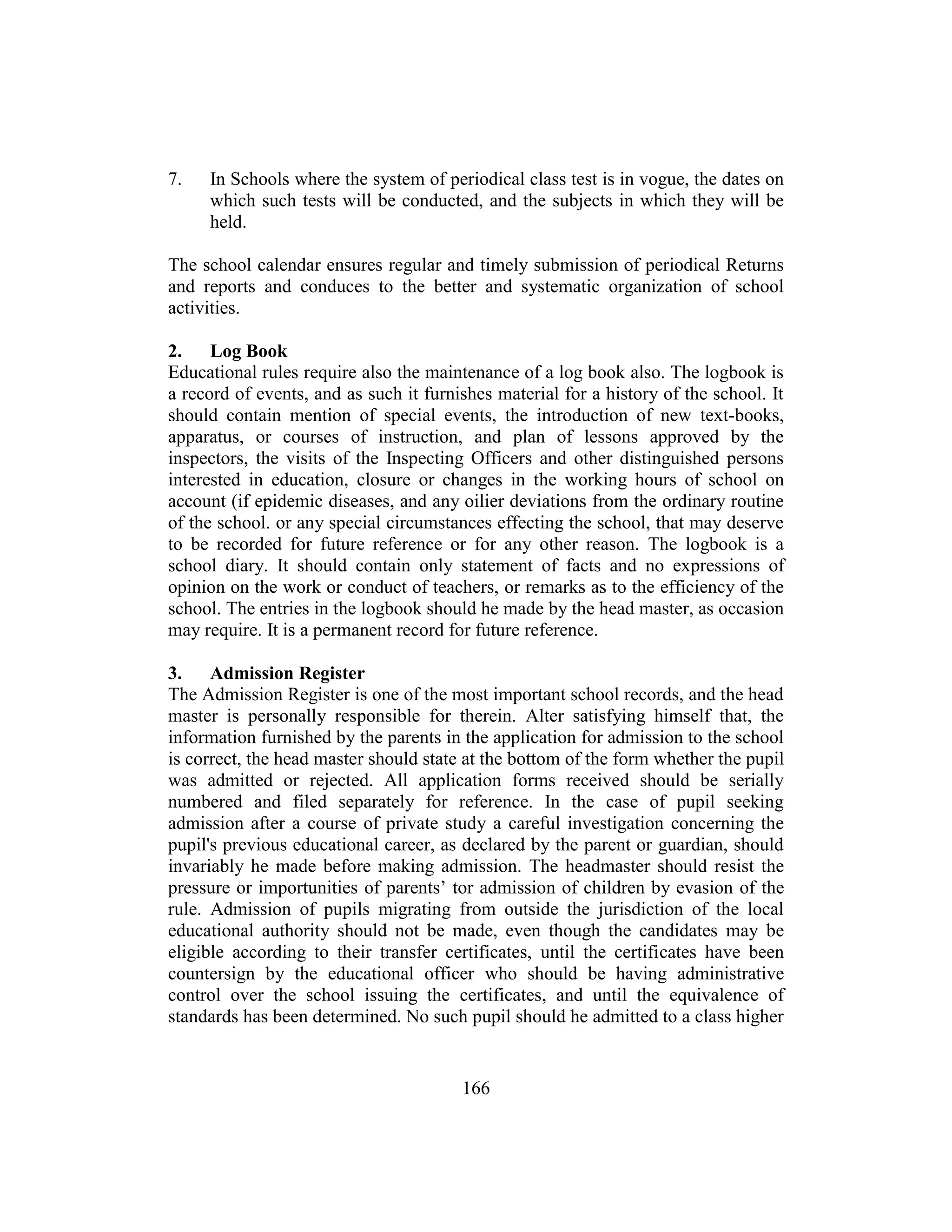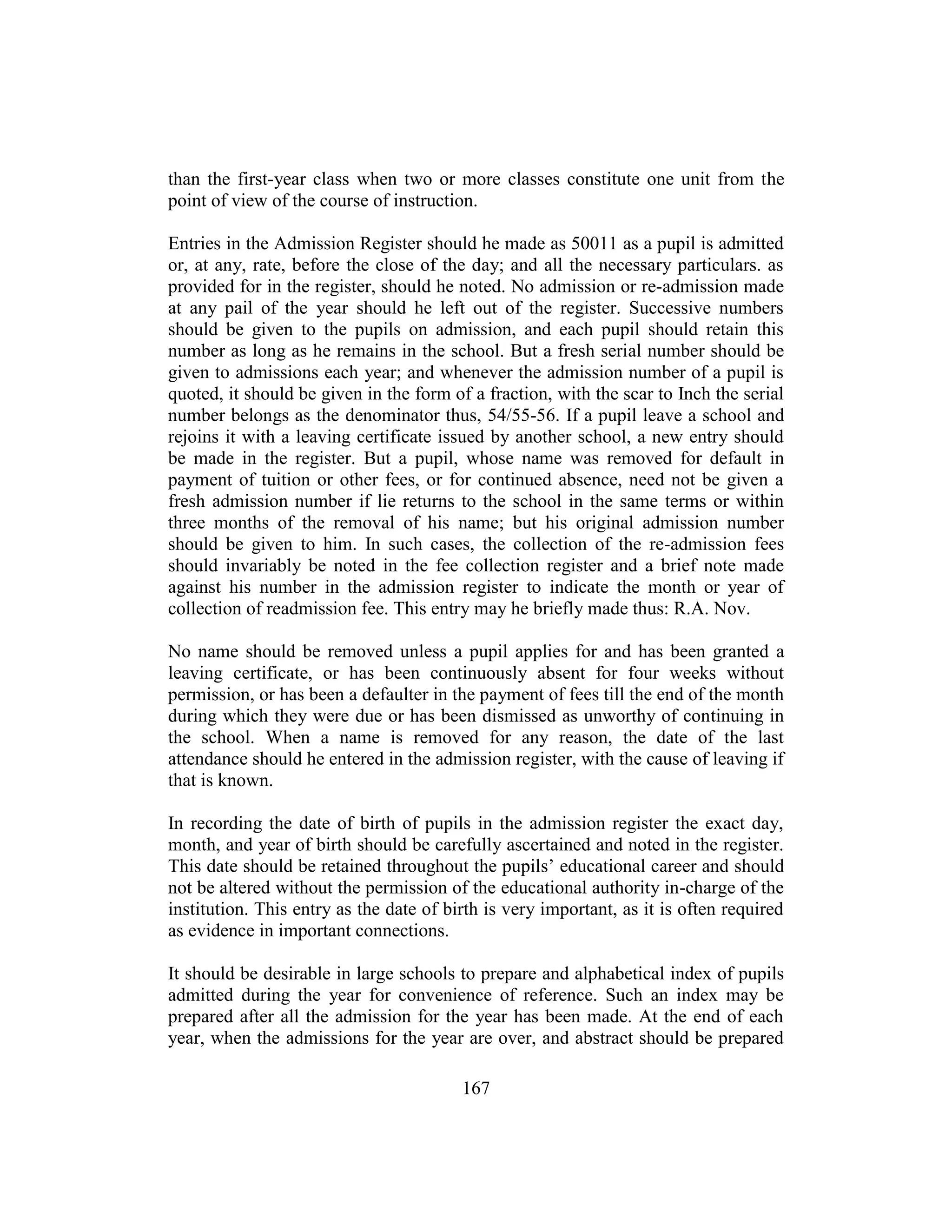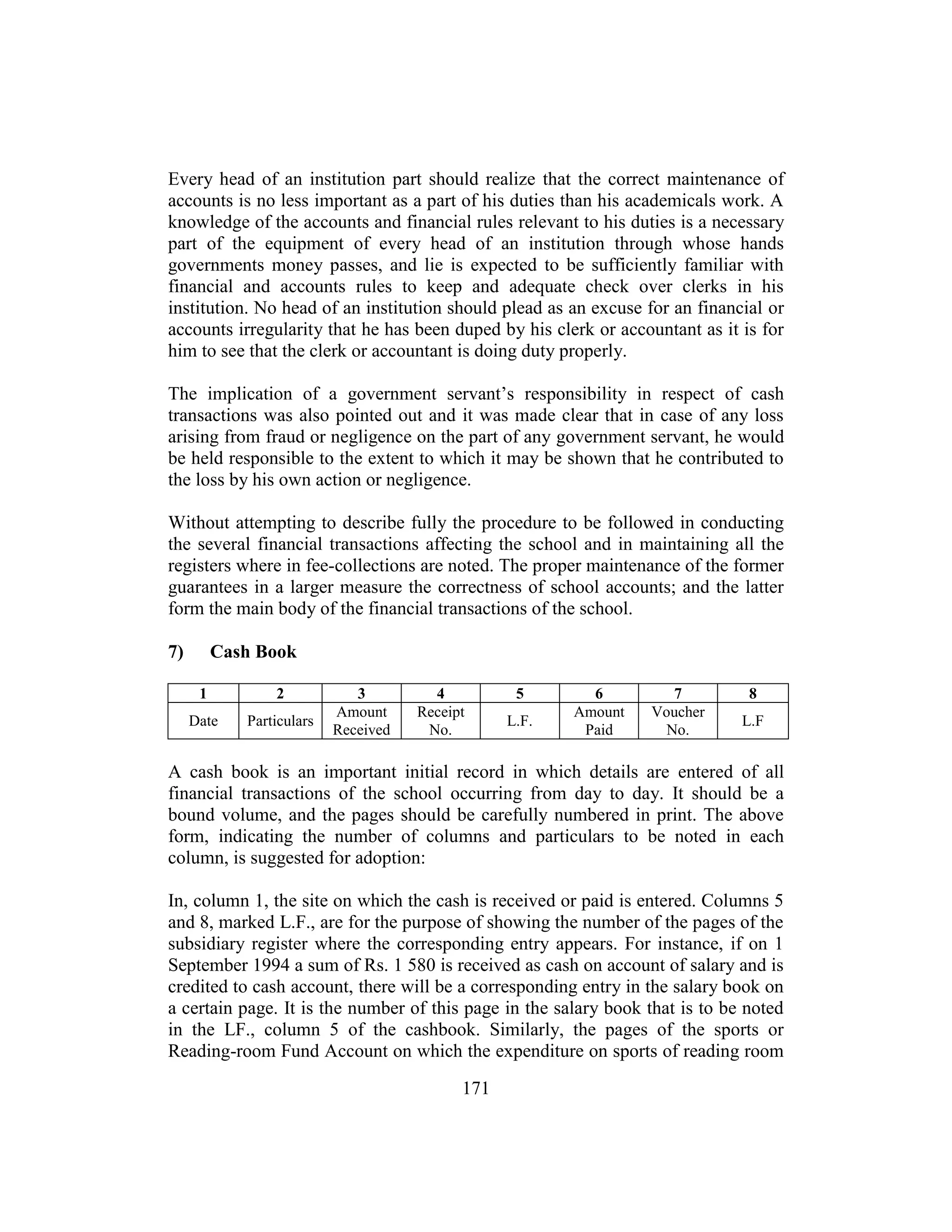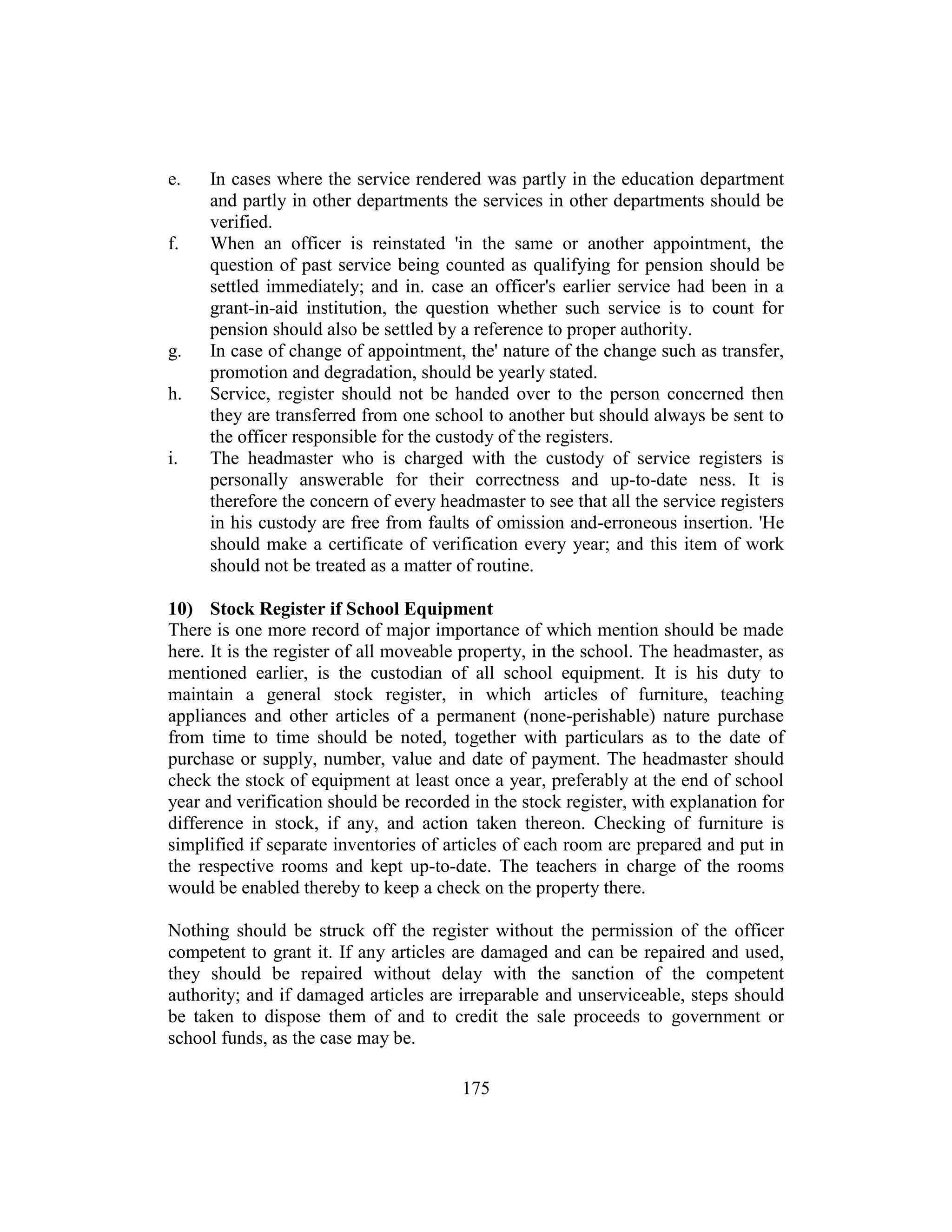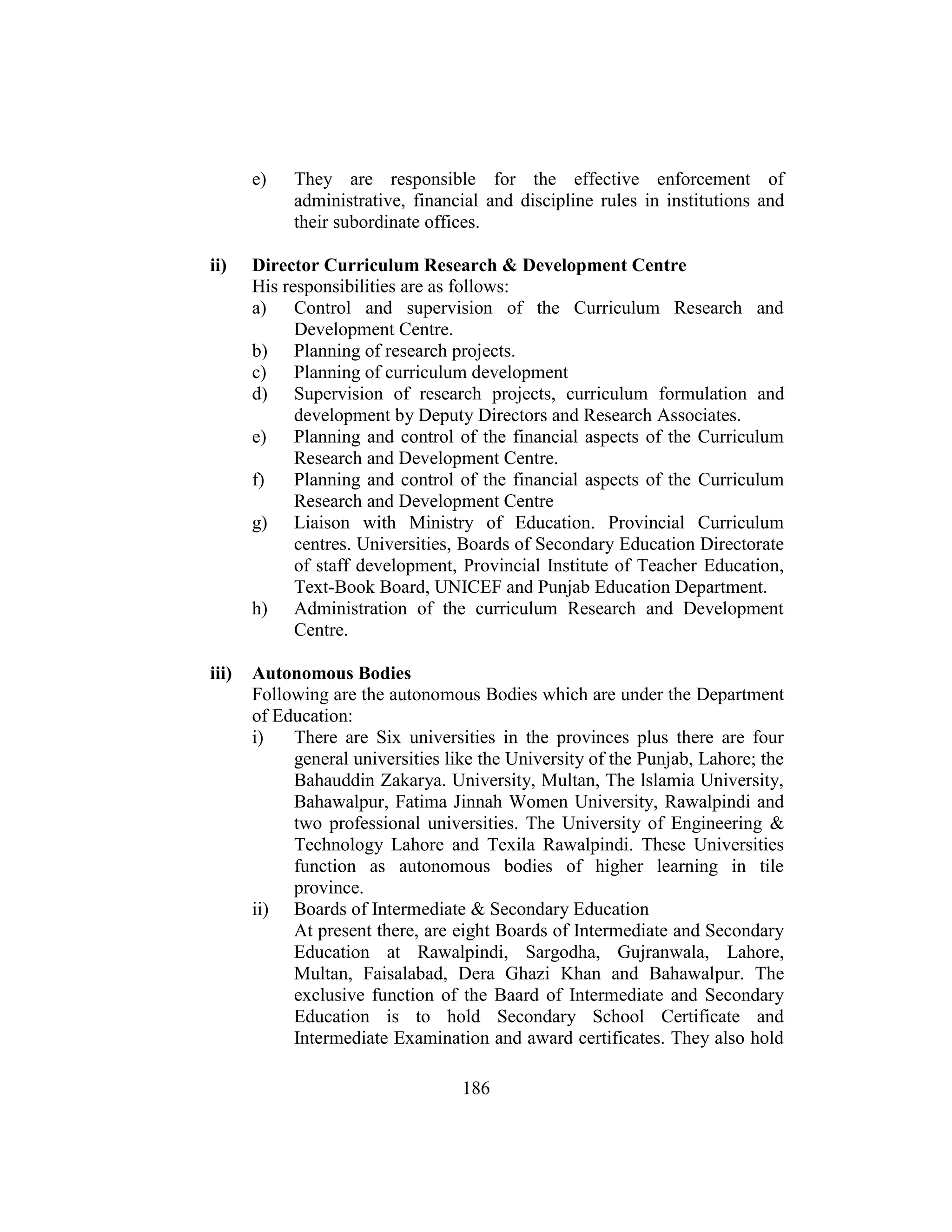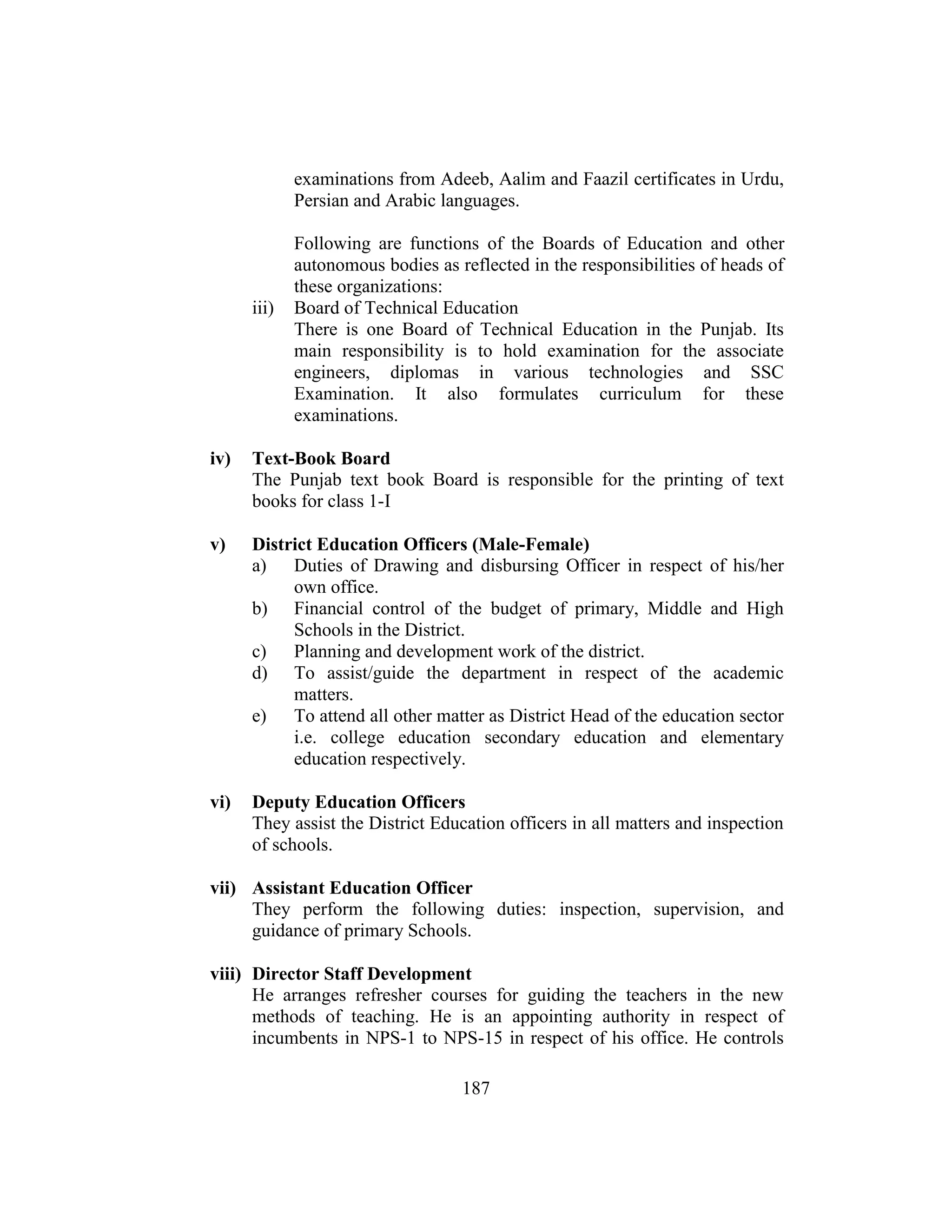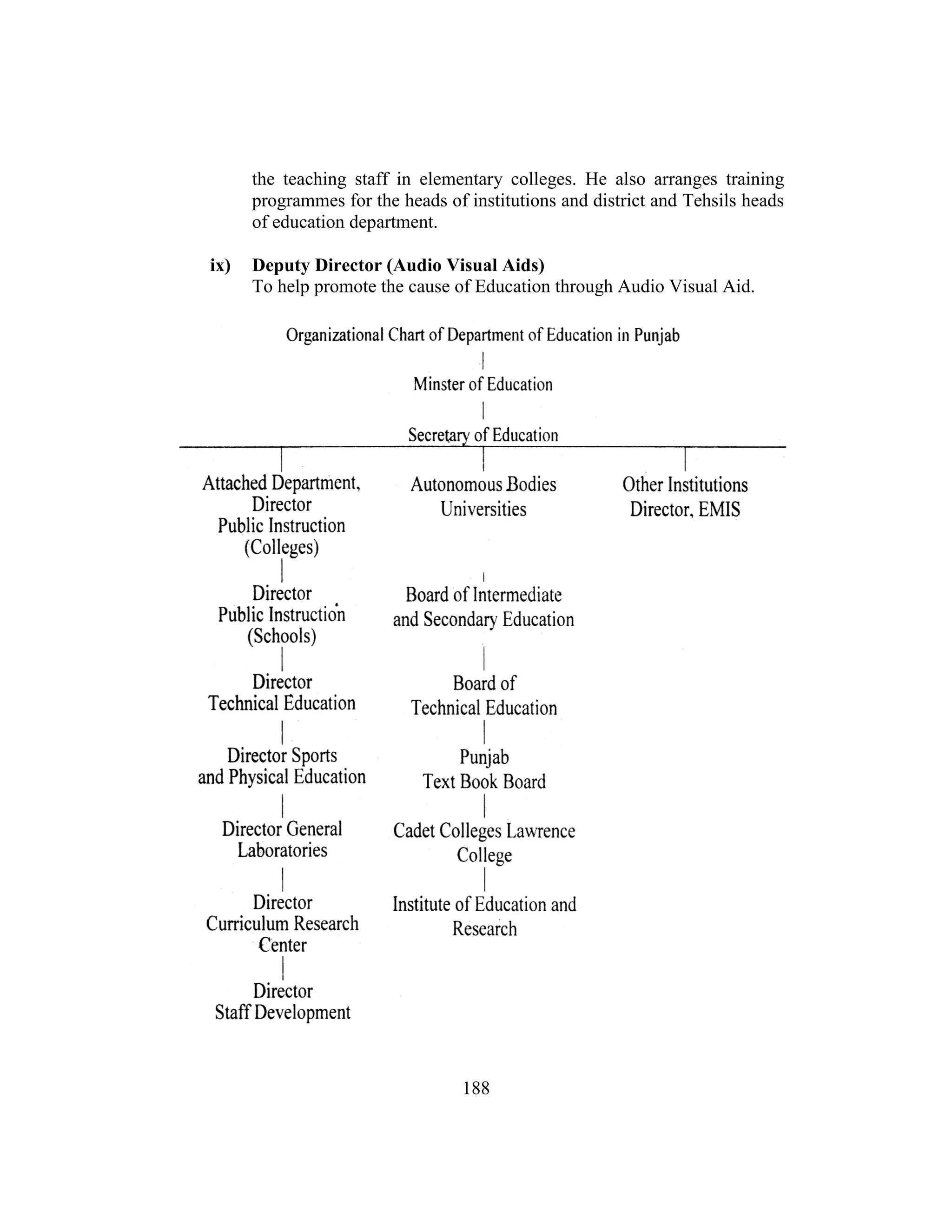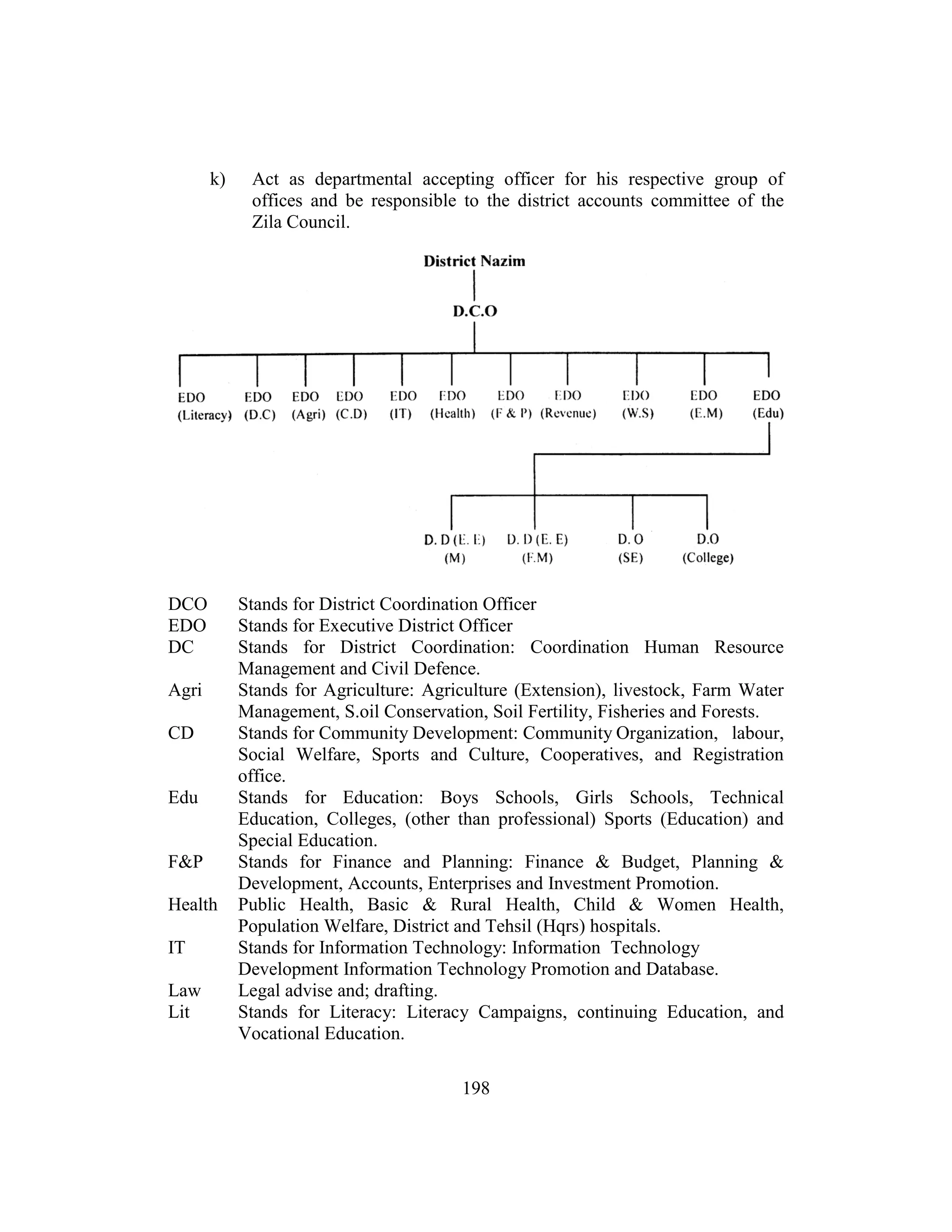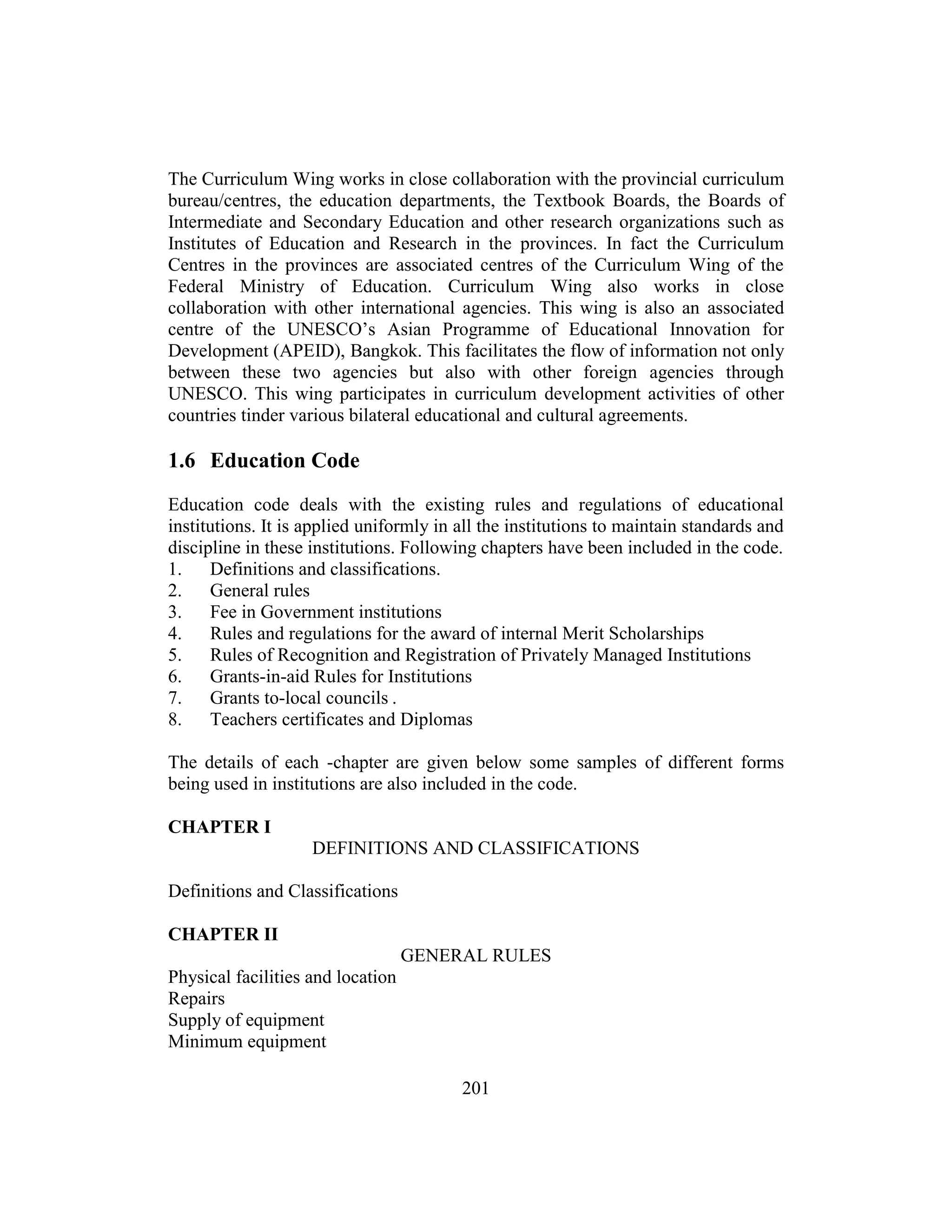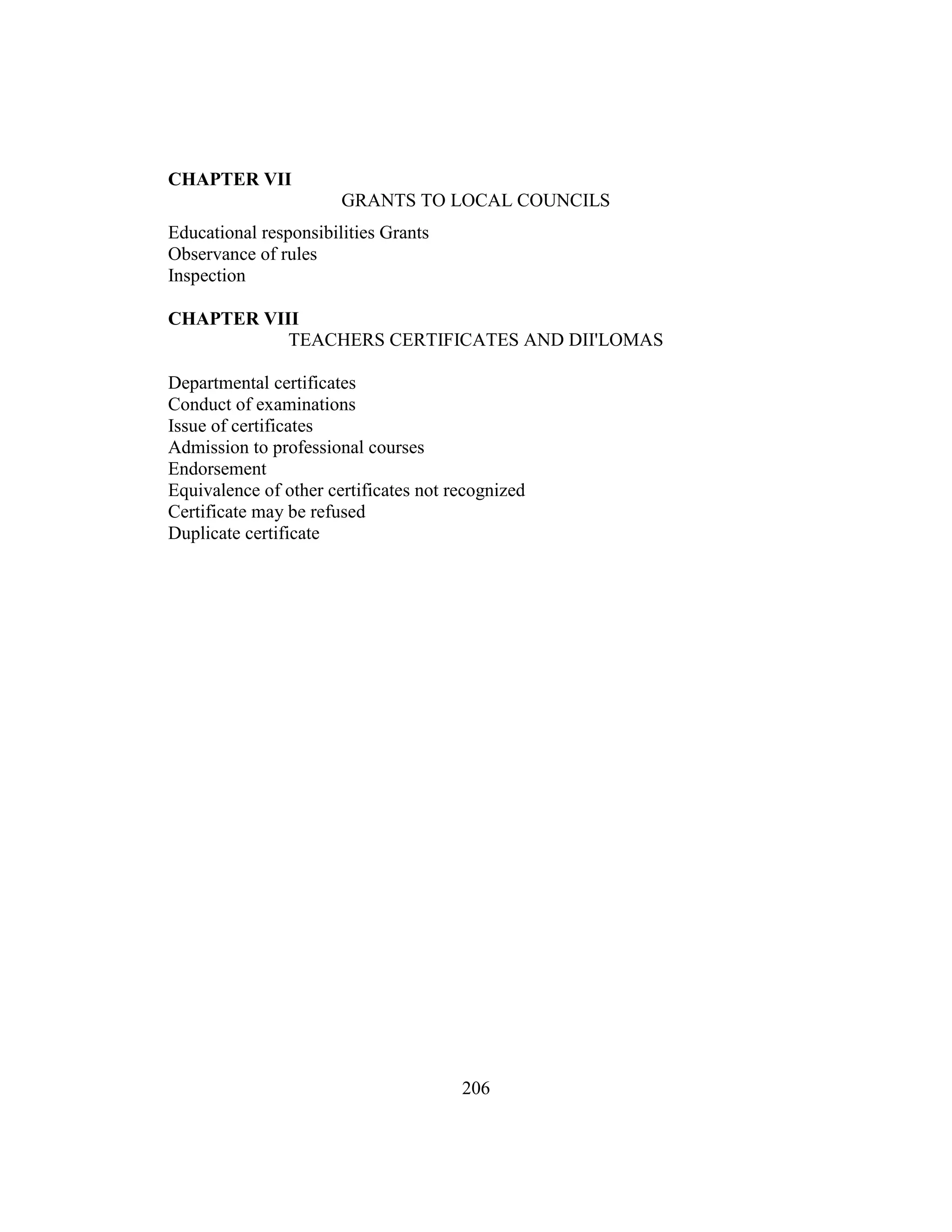This document provides an introduction to the concept of administration in education. It discusses the meaning and nature of educational administration, highlighting its importance and scope. It outlines different approaches to educational management and administration, as well as basic principles of educational administration. Additionally, it examines the meaning and spirit of Islamic administration, fundamental principles of Islamic administration, and the dynamics of the Islamic model of administration, including its structure and the duties of an Islamic administrator. The overall purpose is to describe key concepts relating to administration in education from both general and Islamic perspectives.

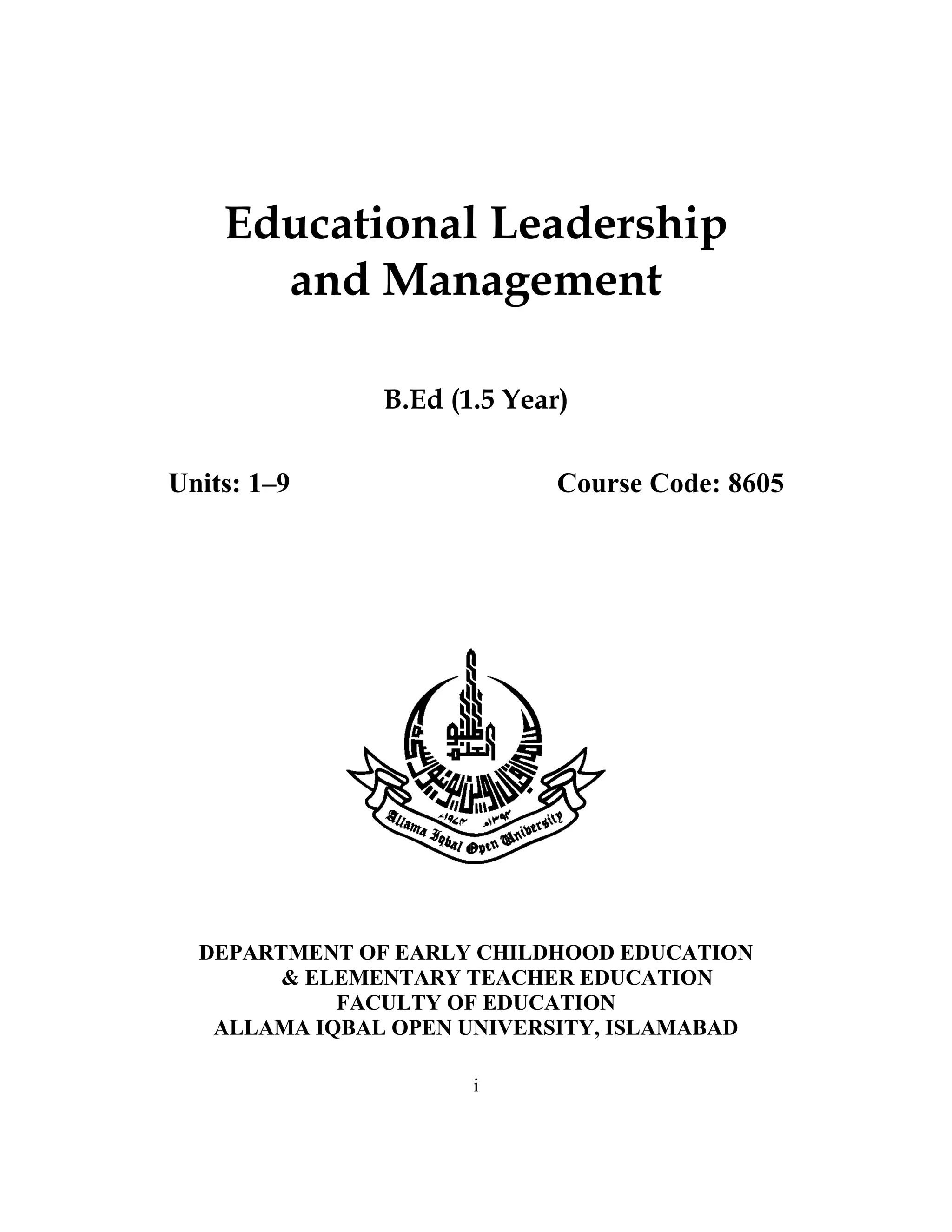











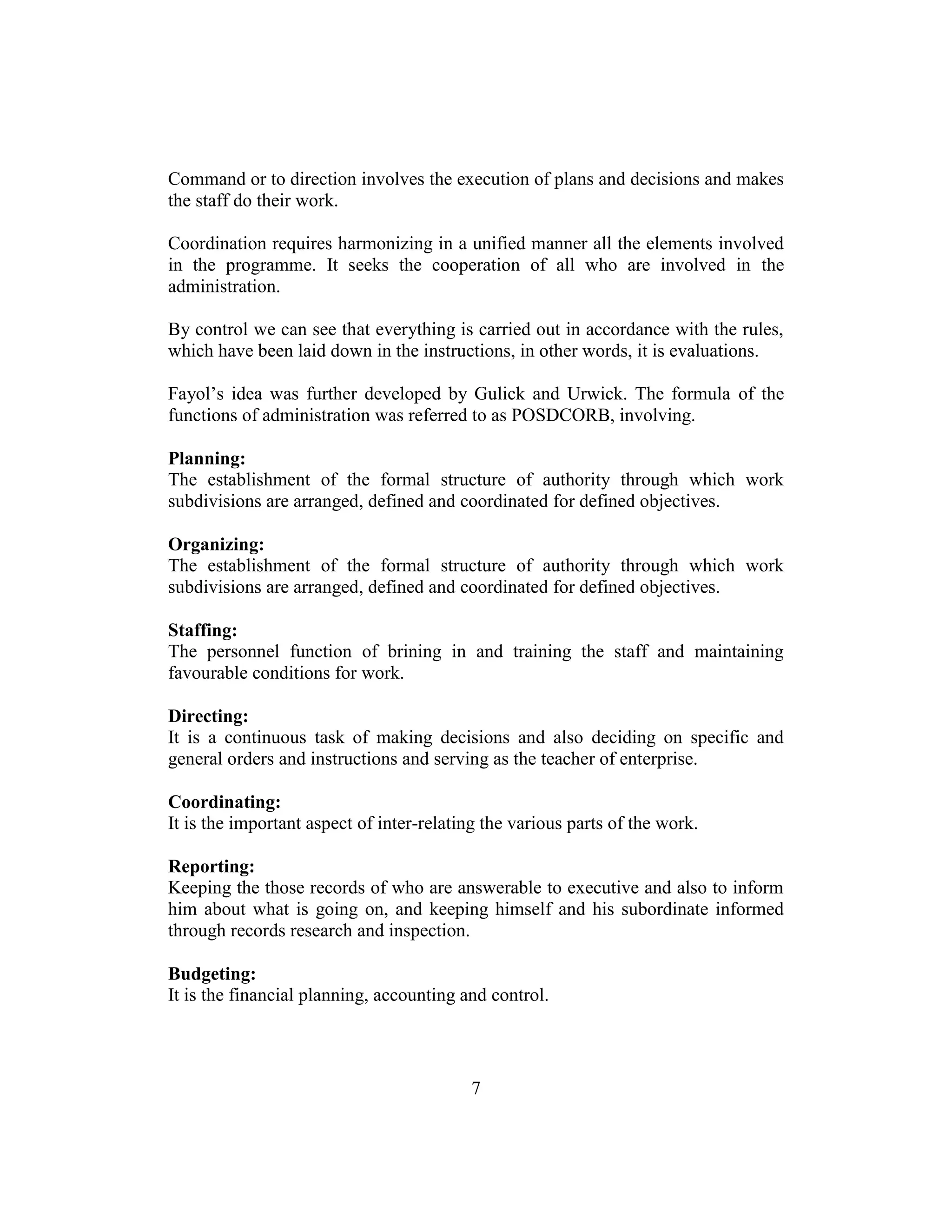


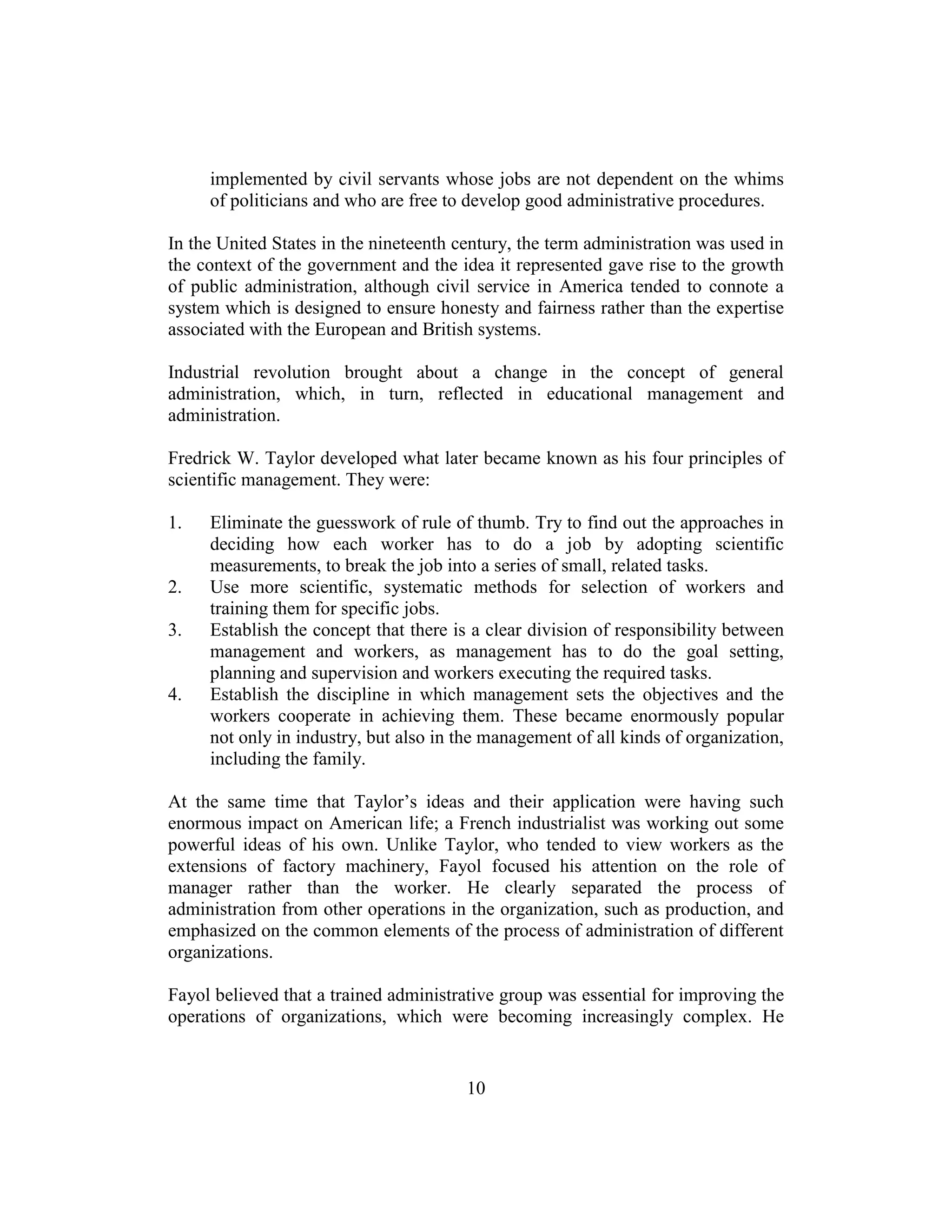






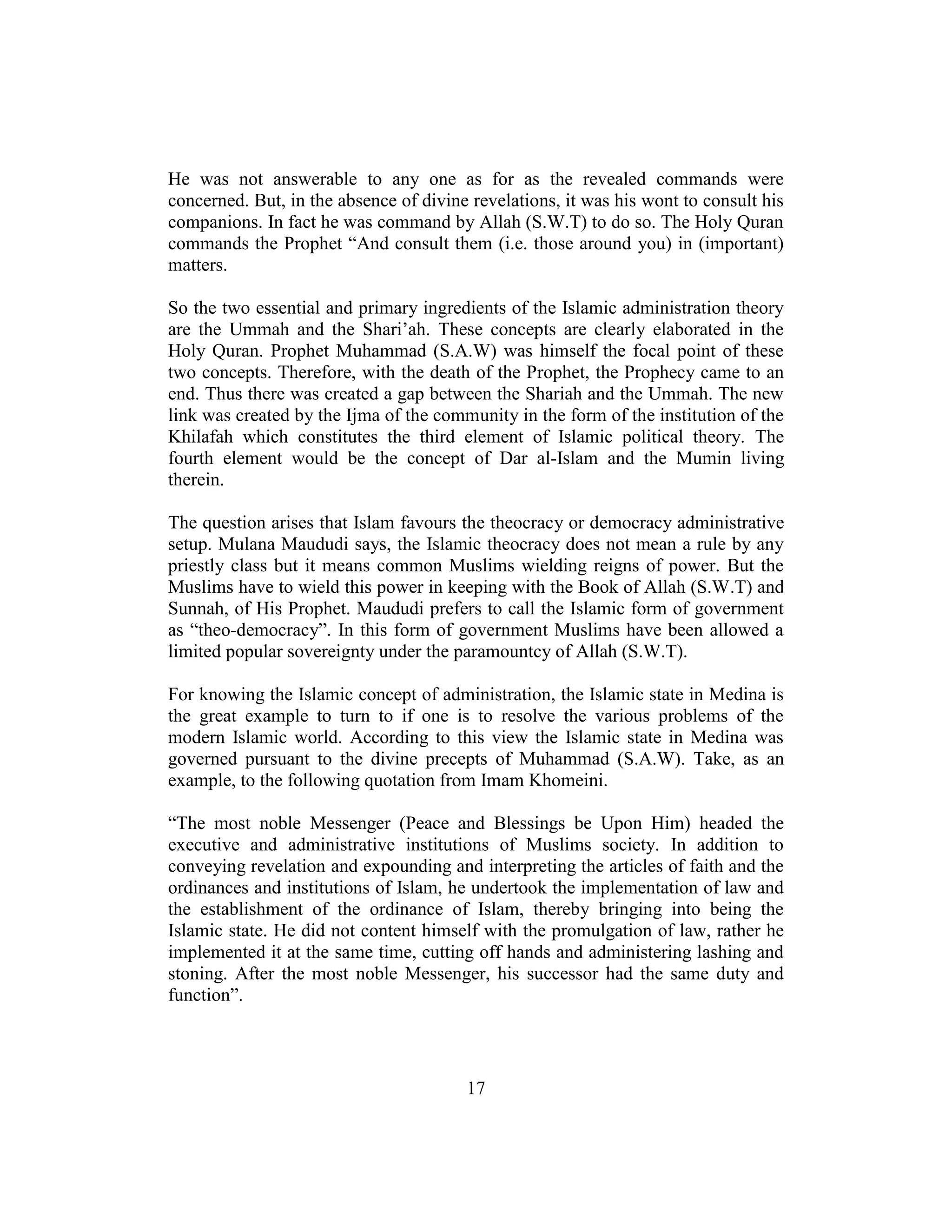



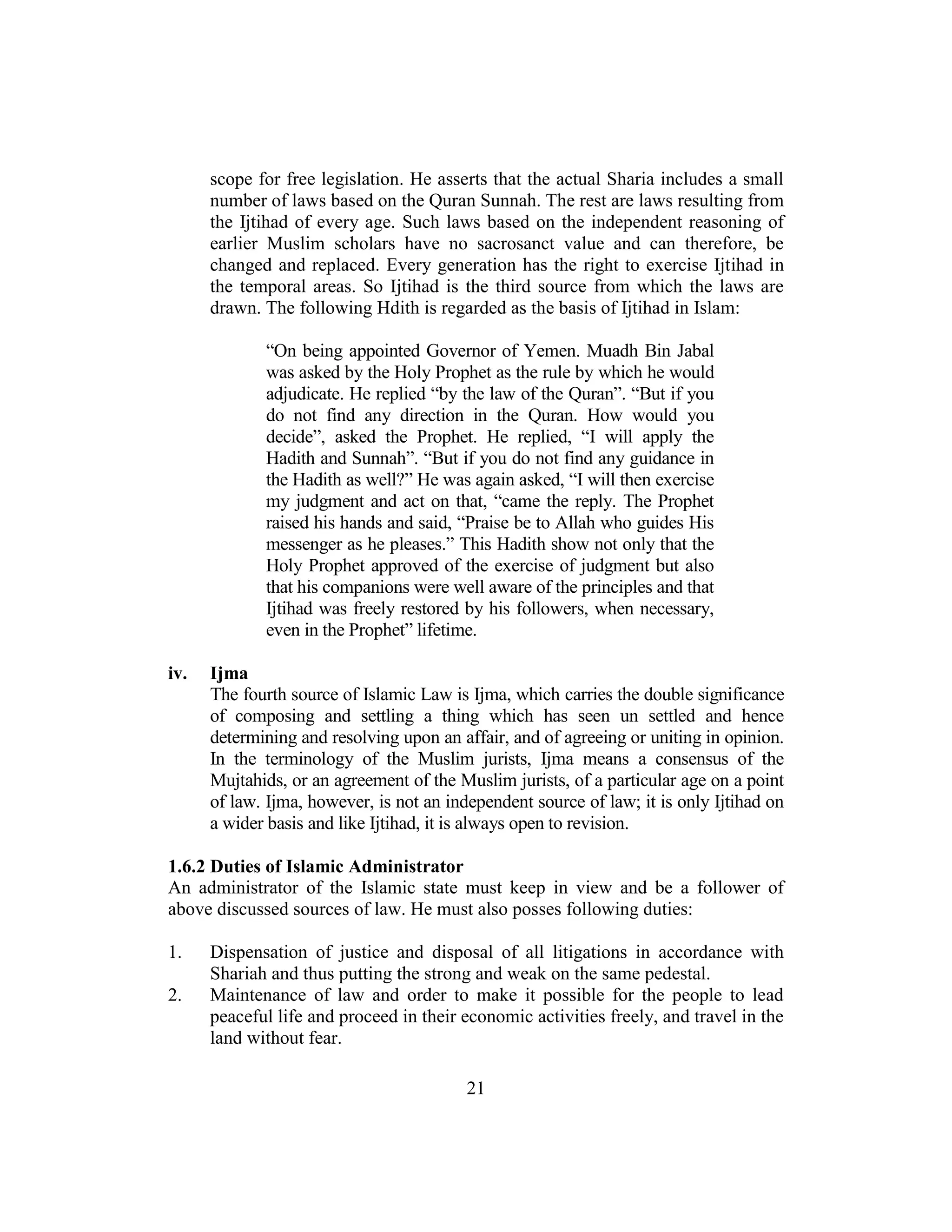
















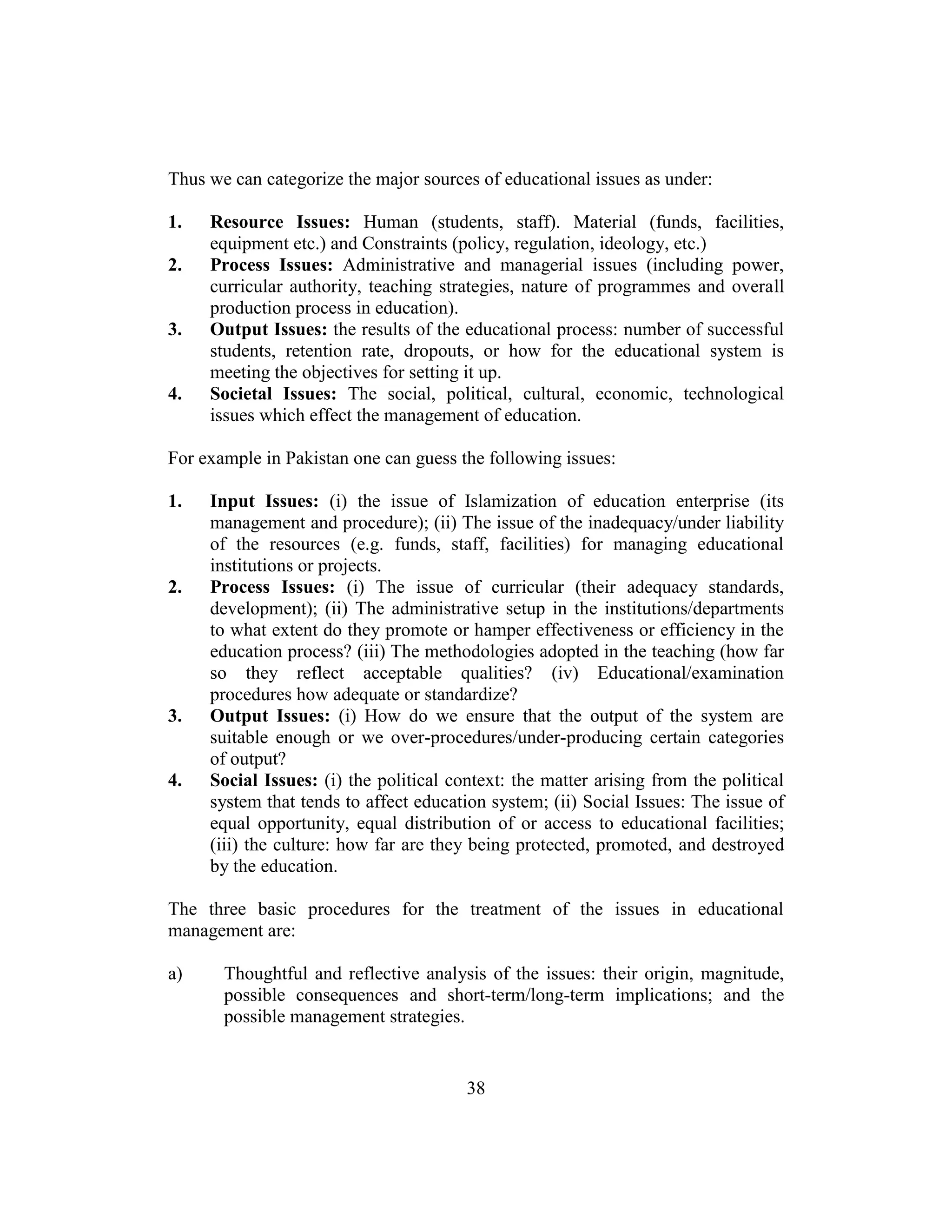


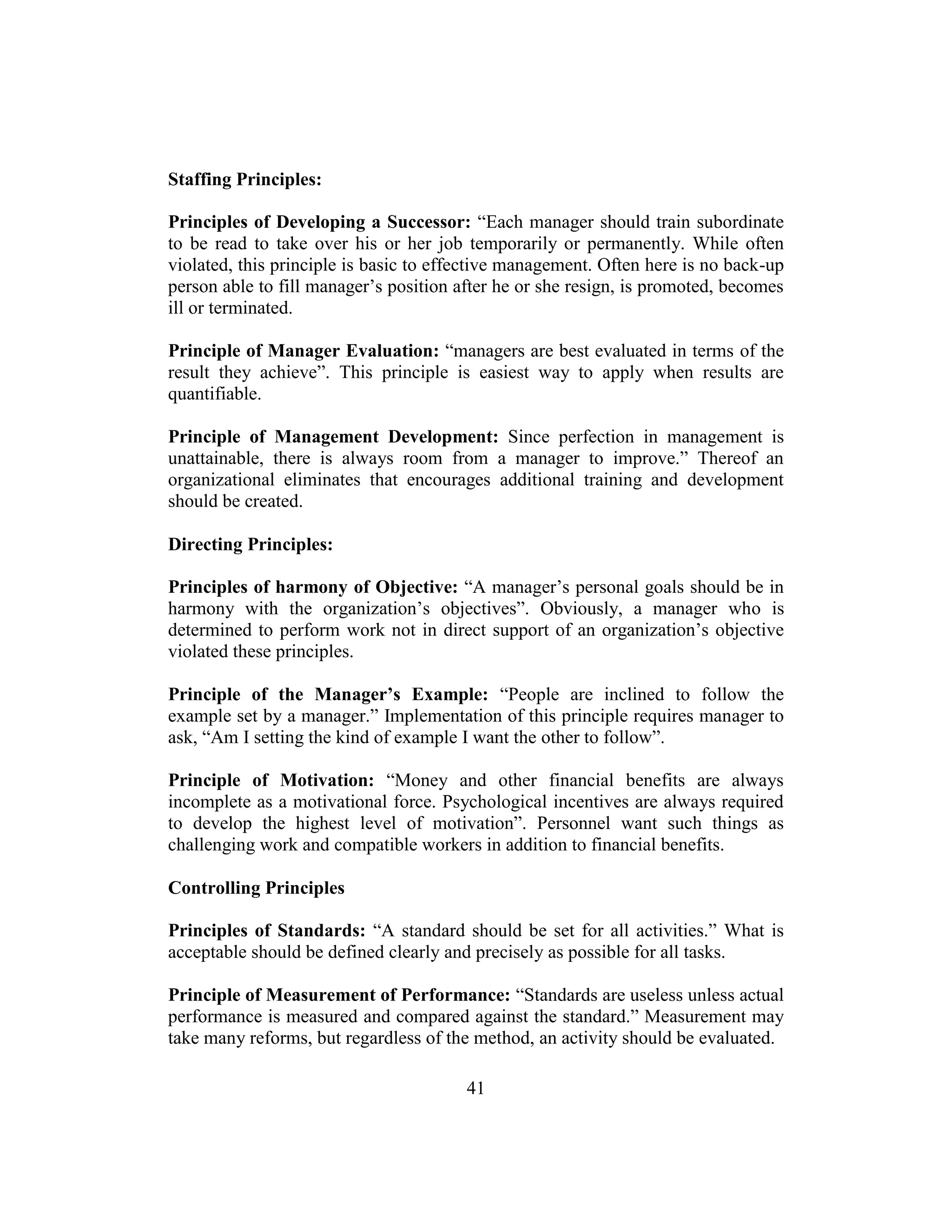




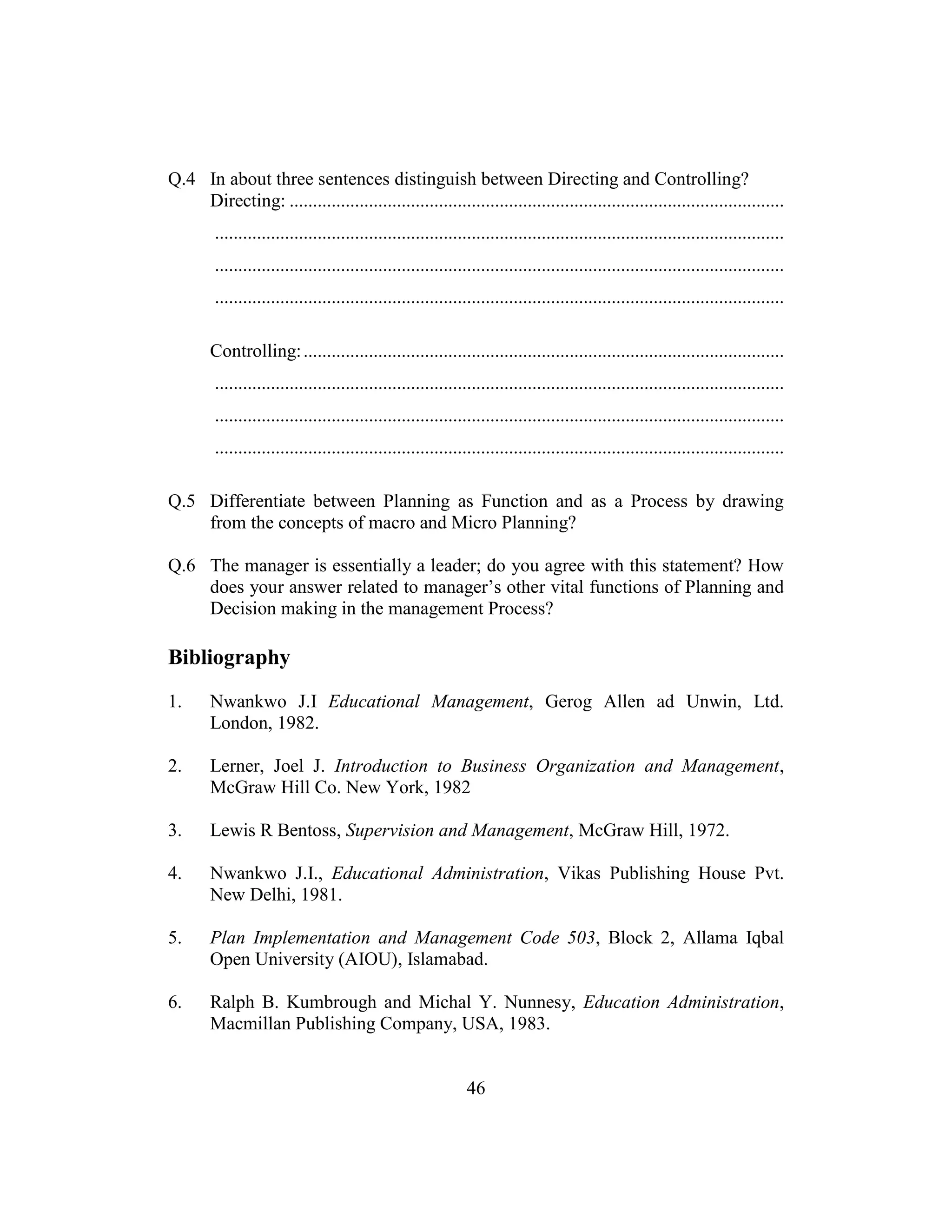
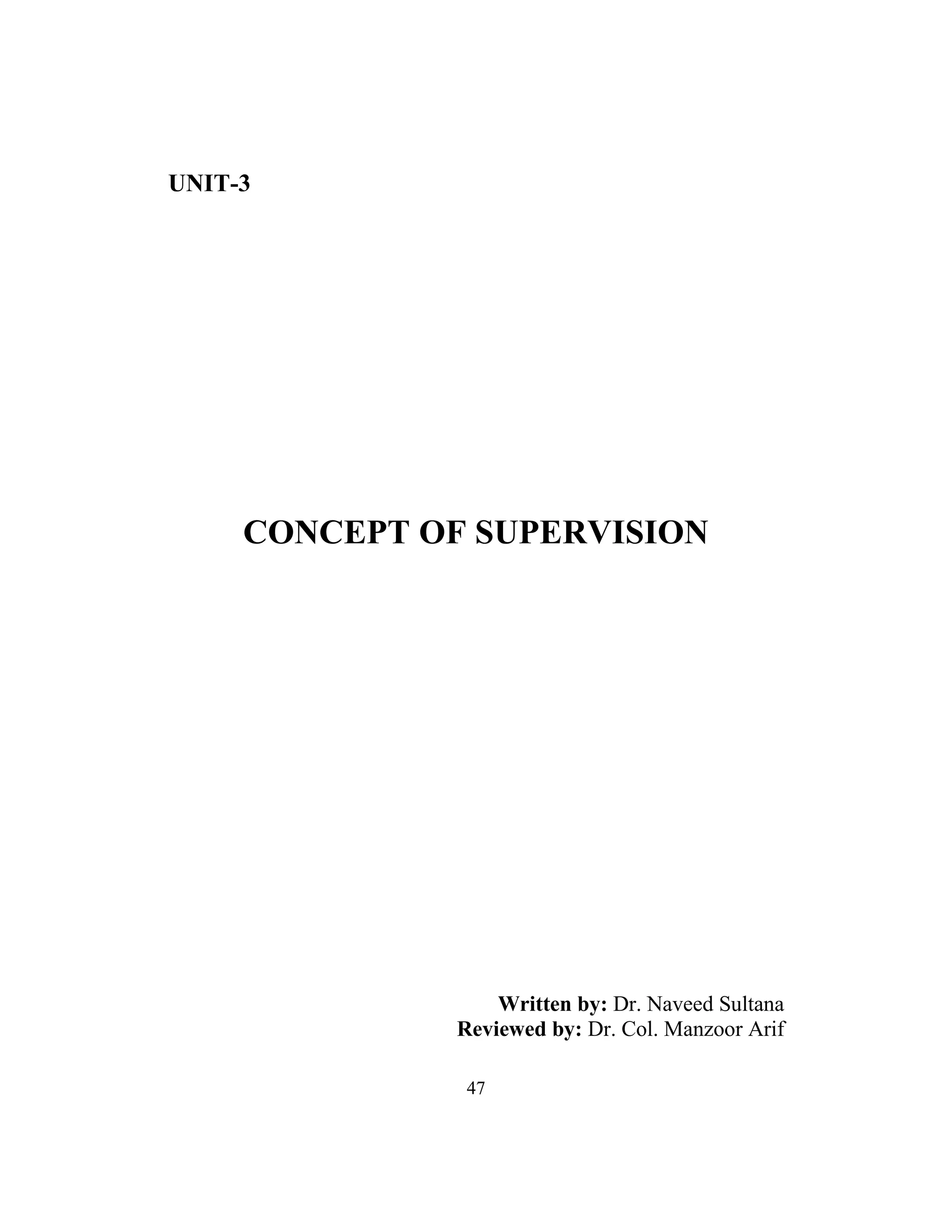

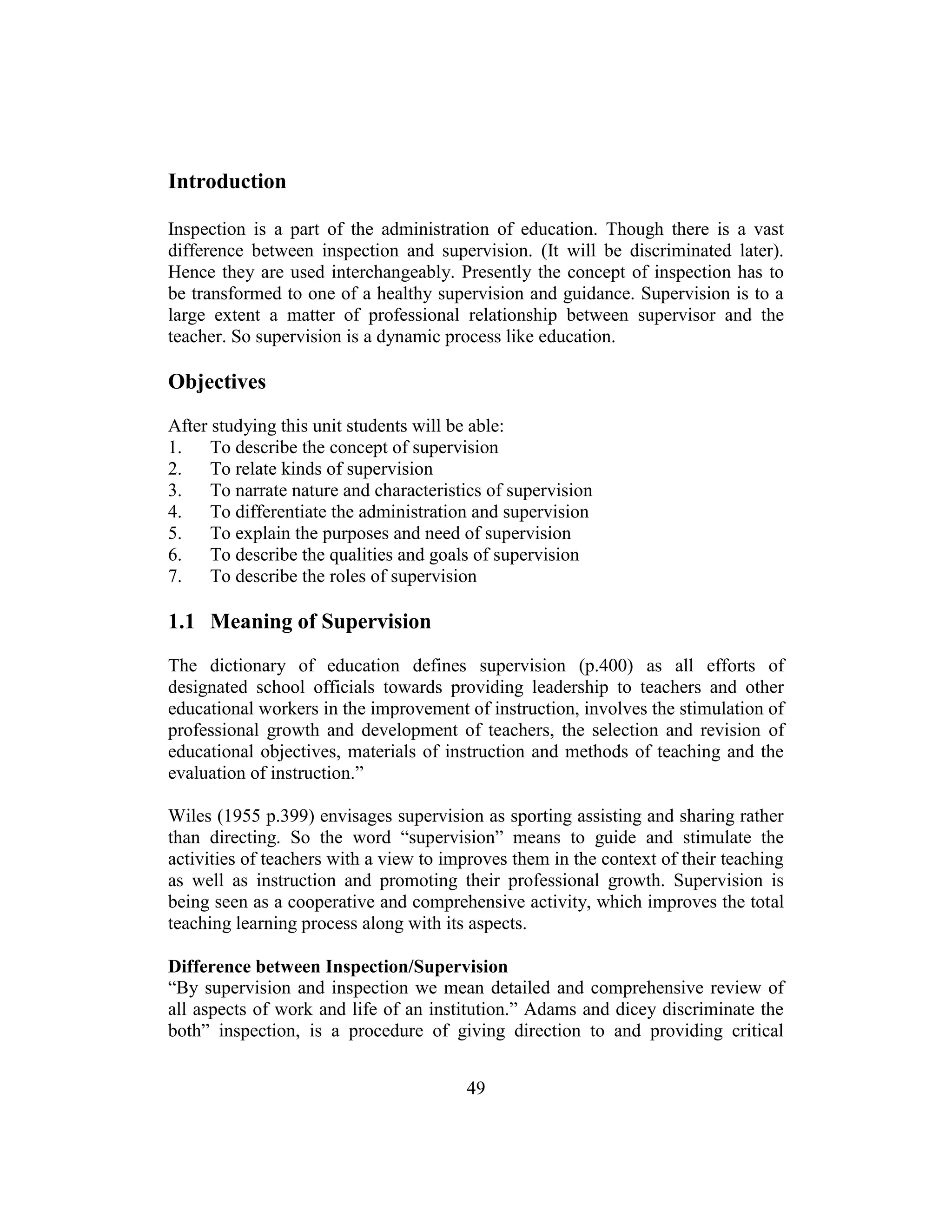








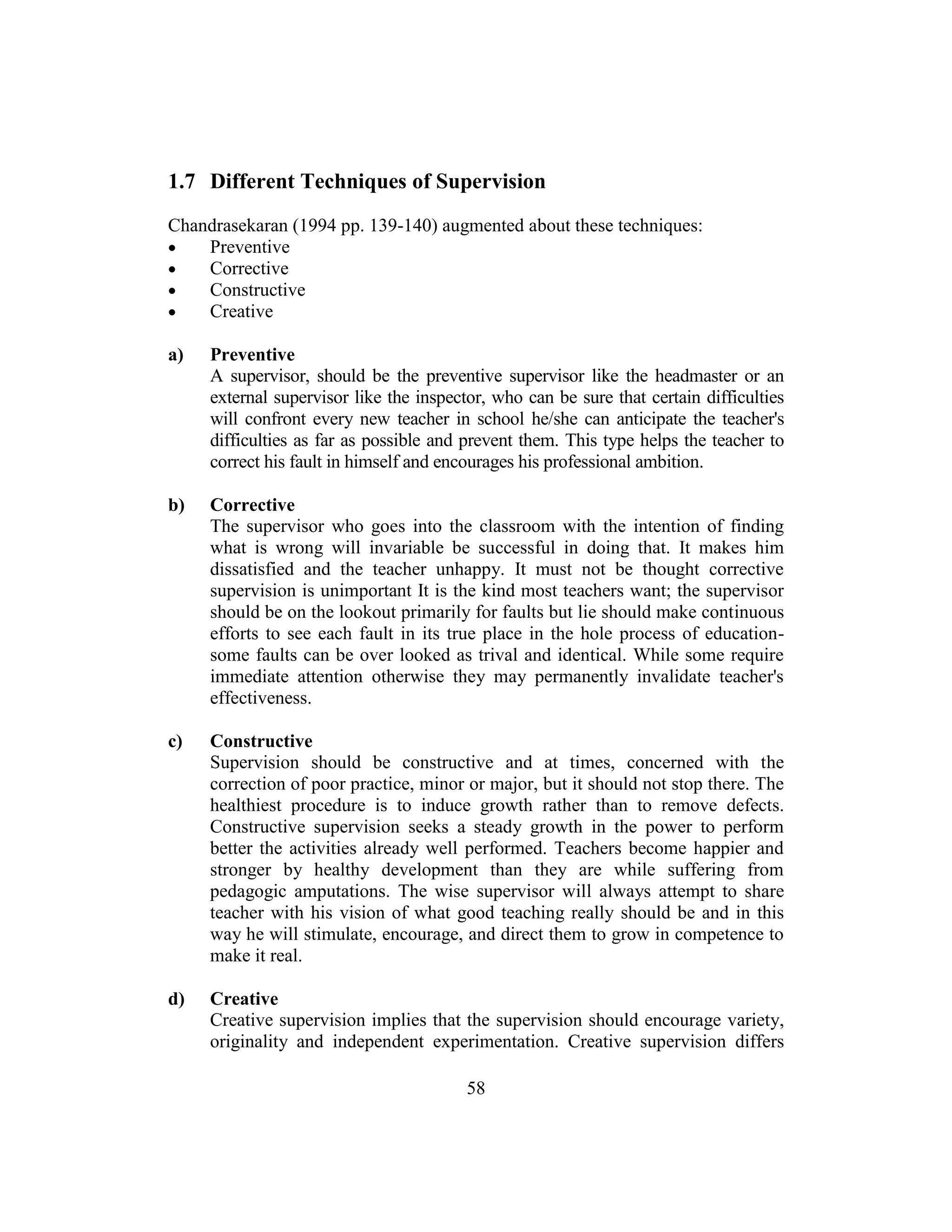

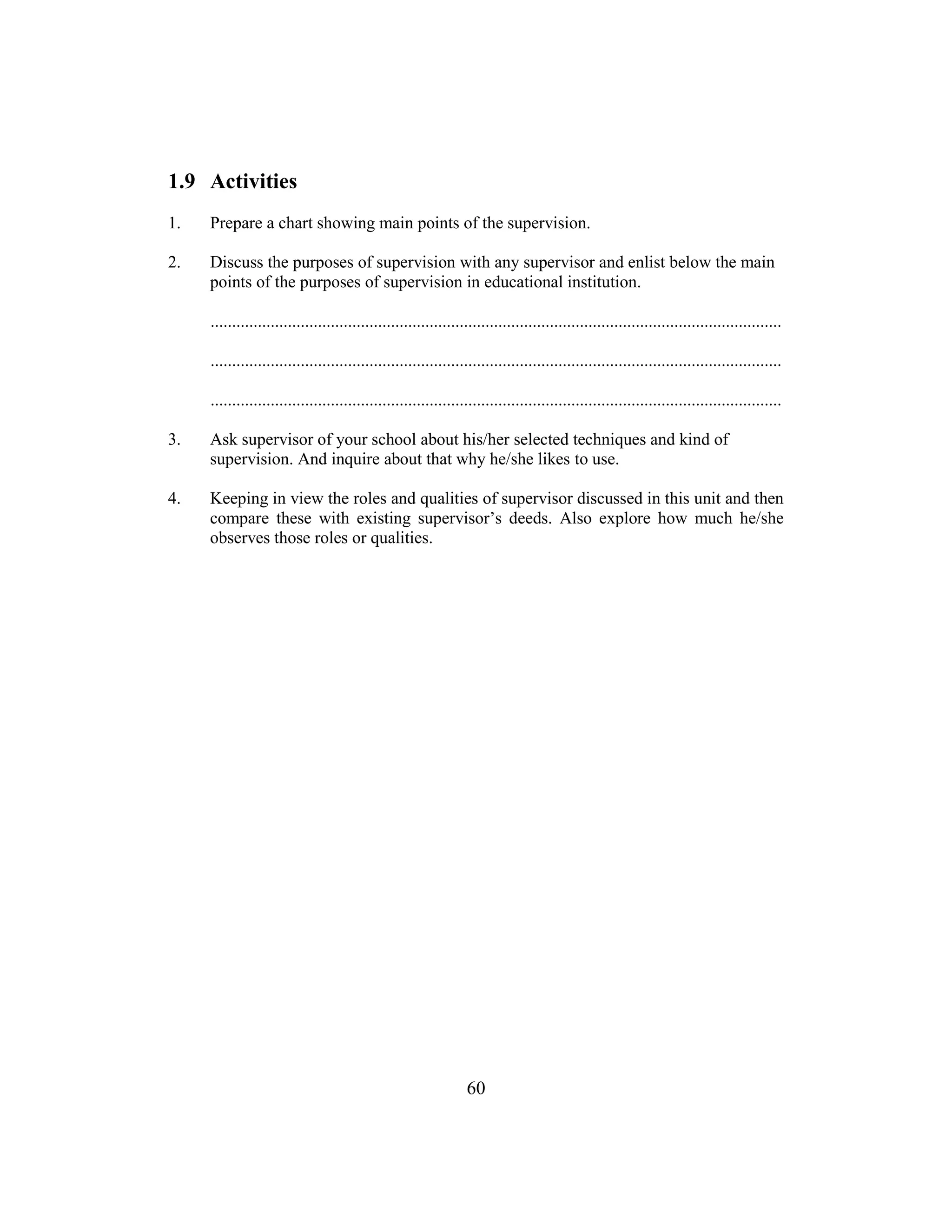











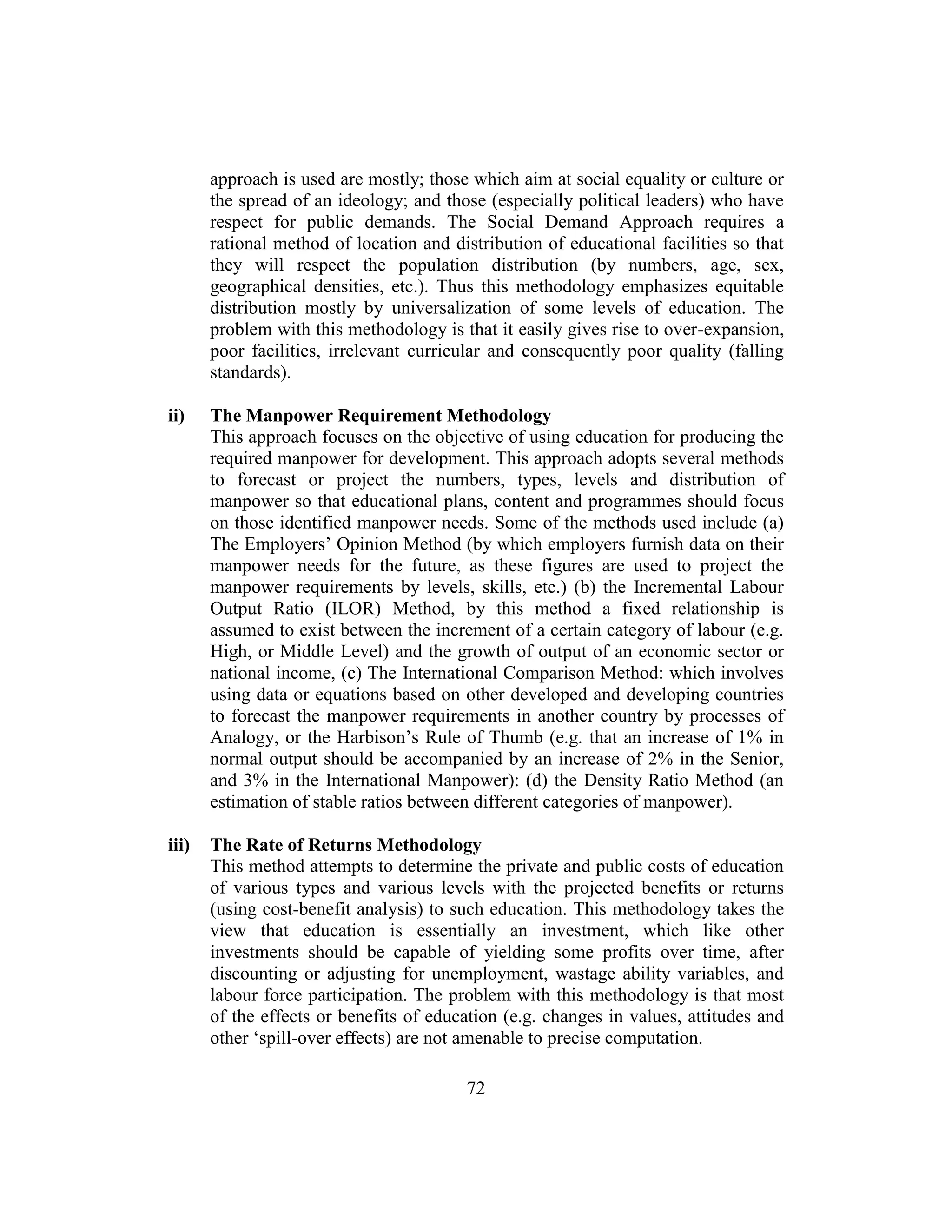














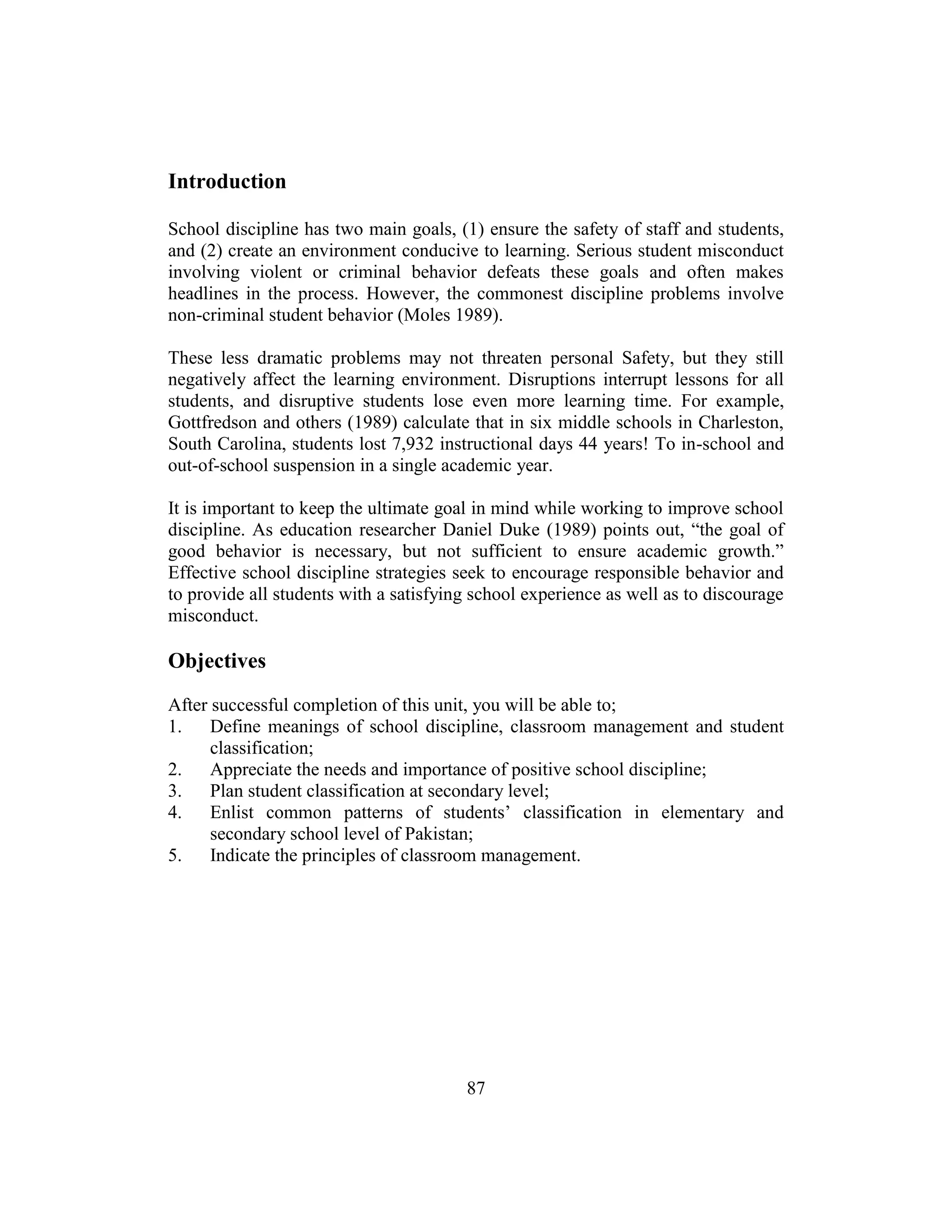


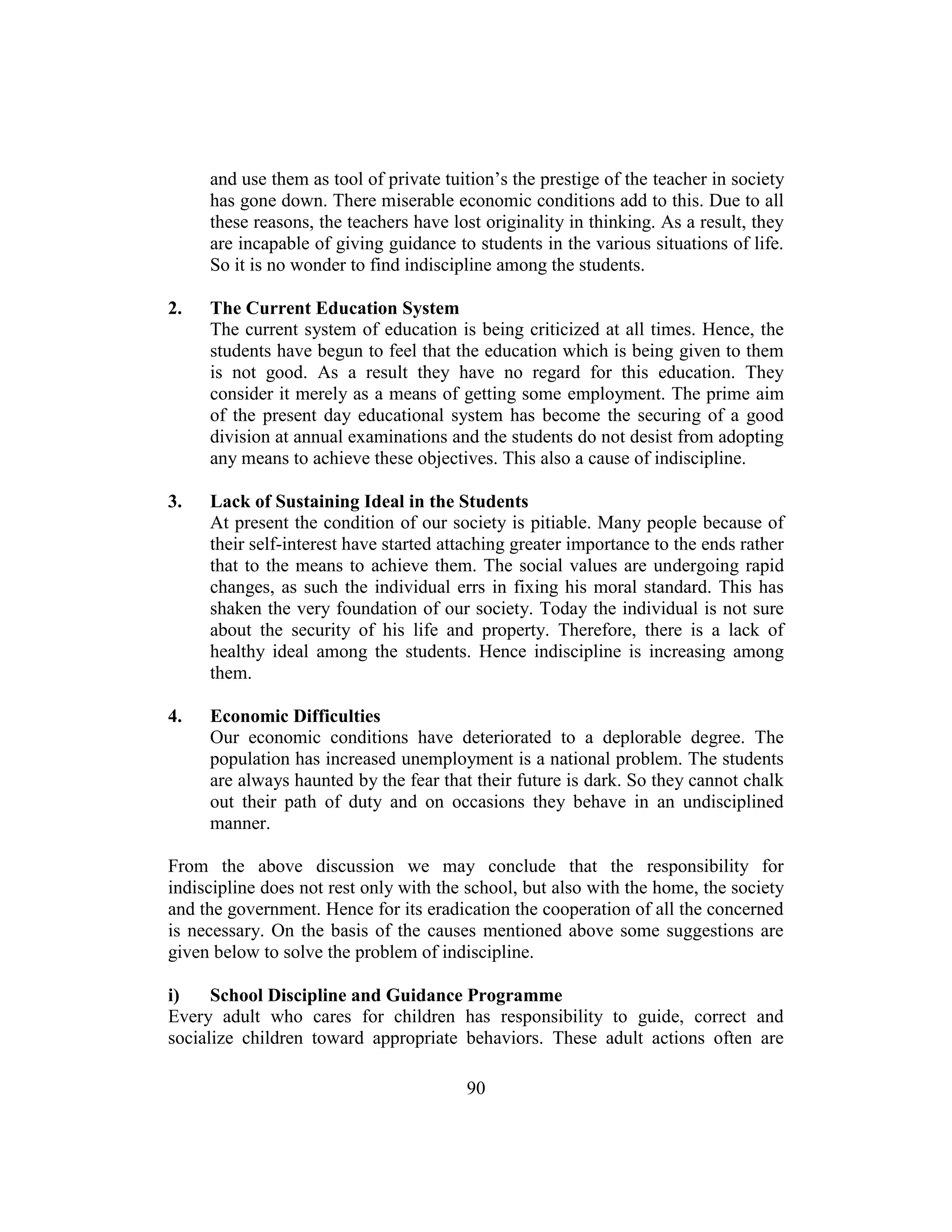


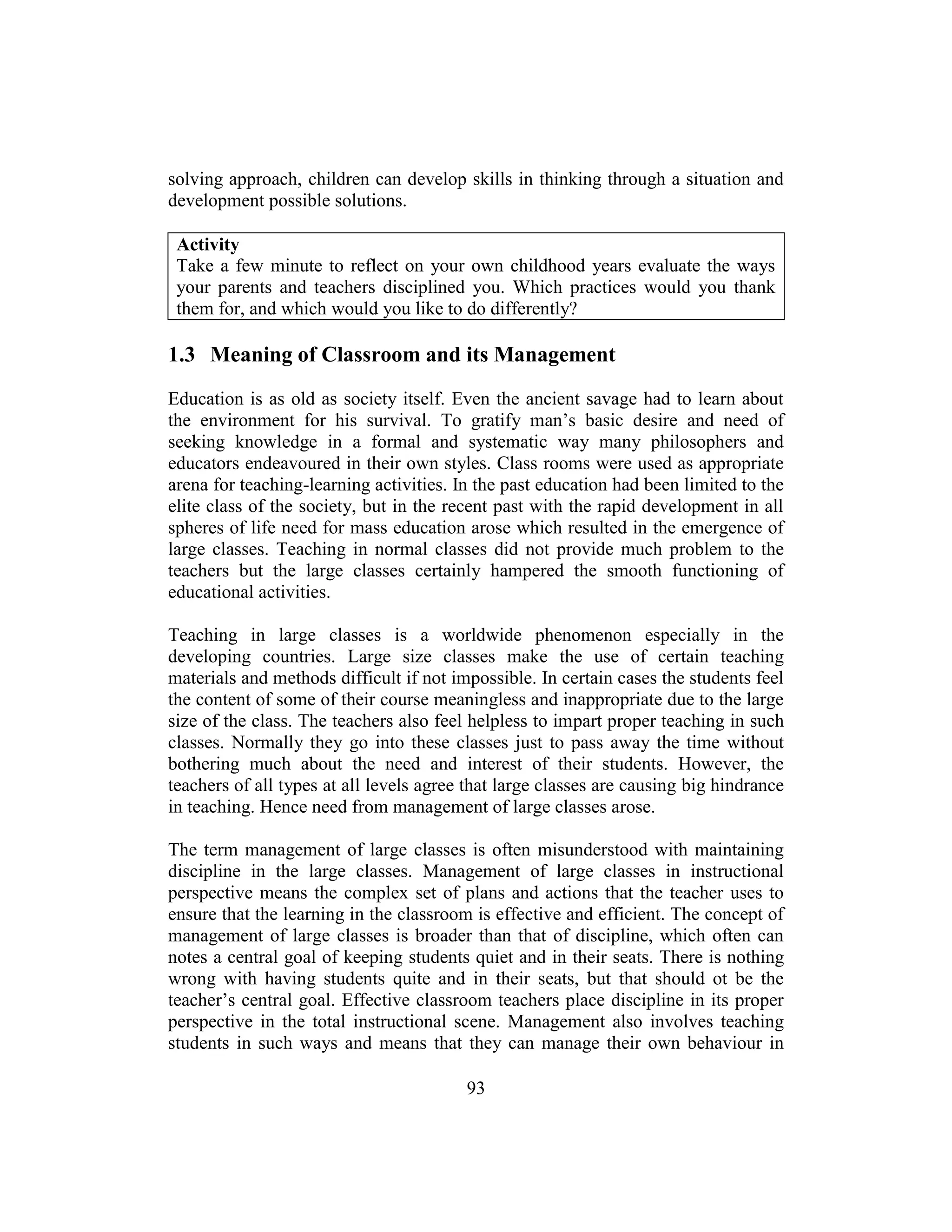
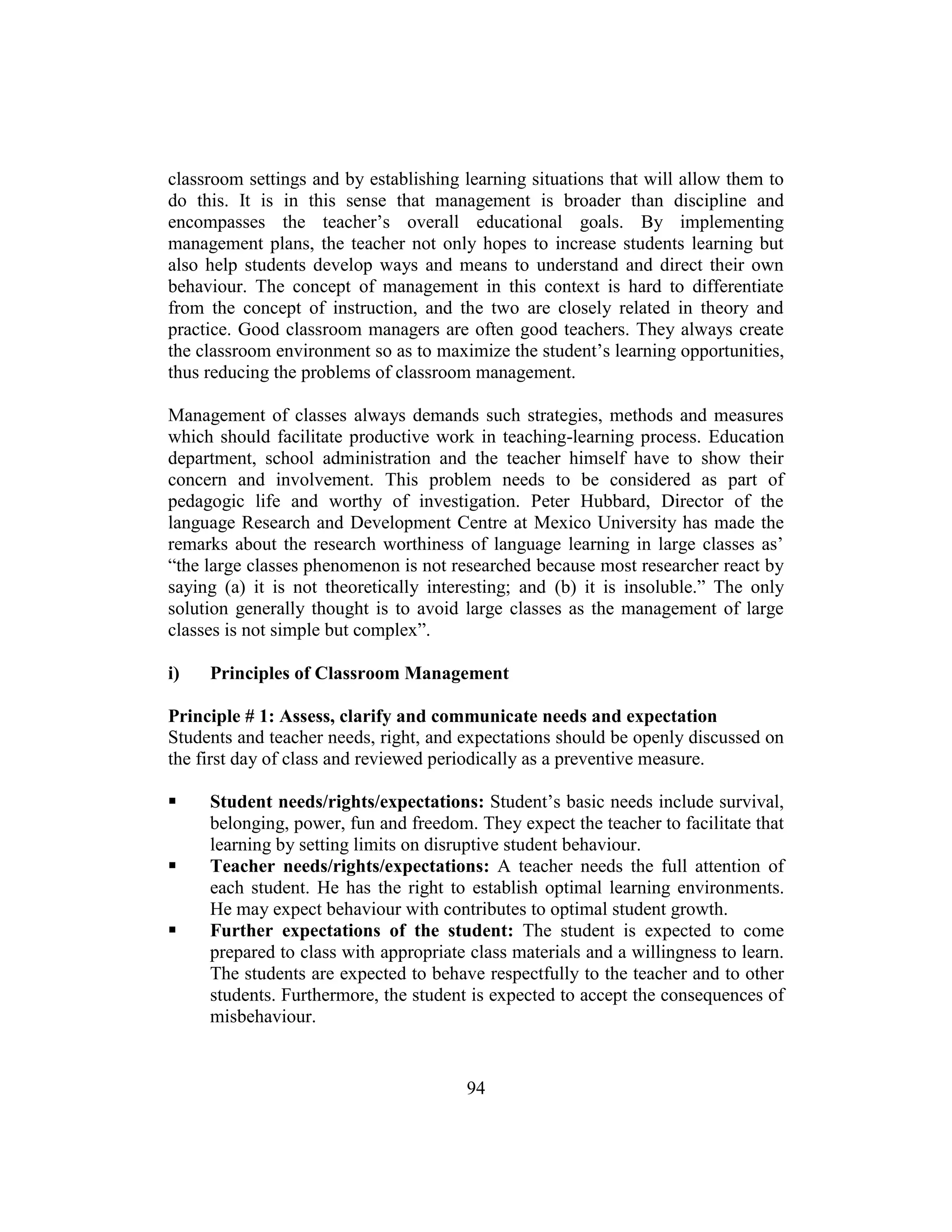
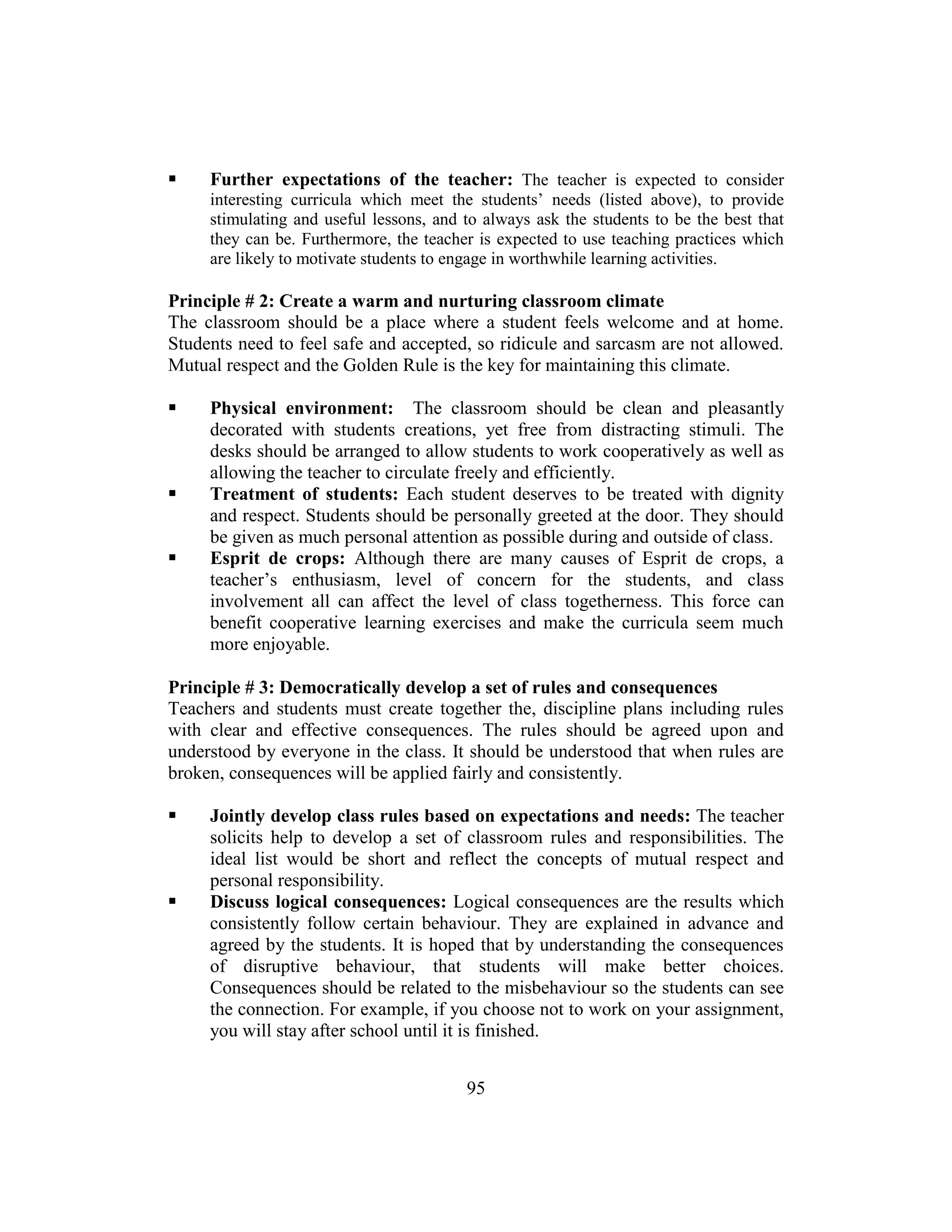
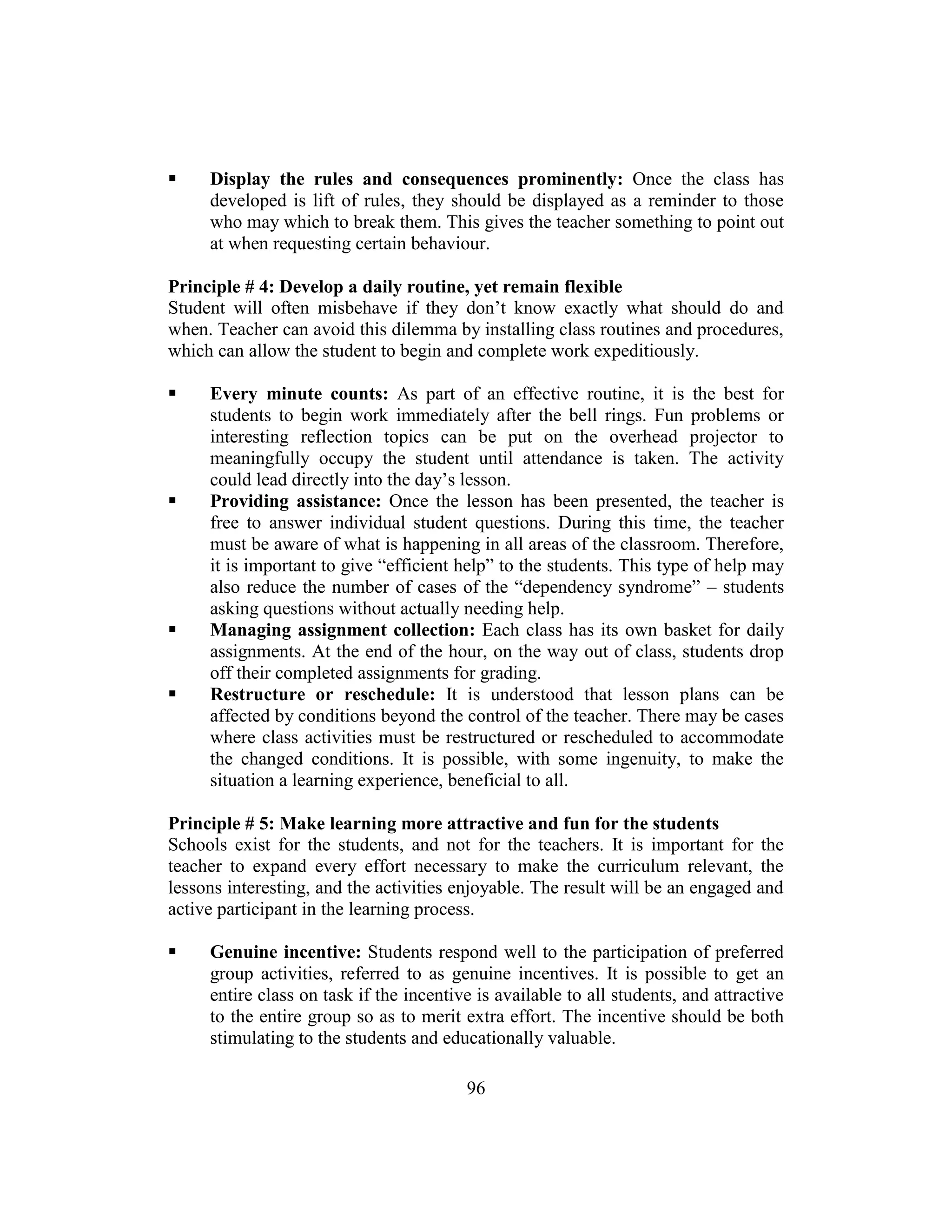


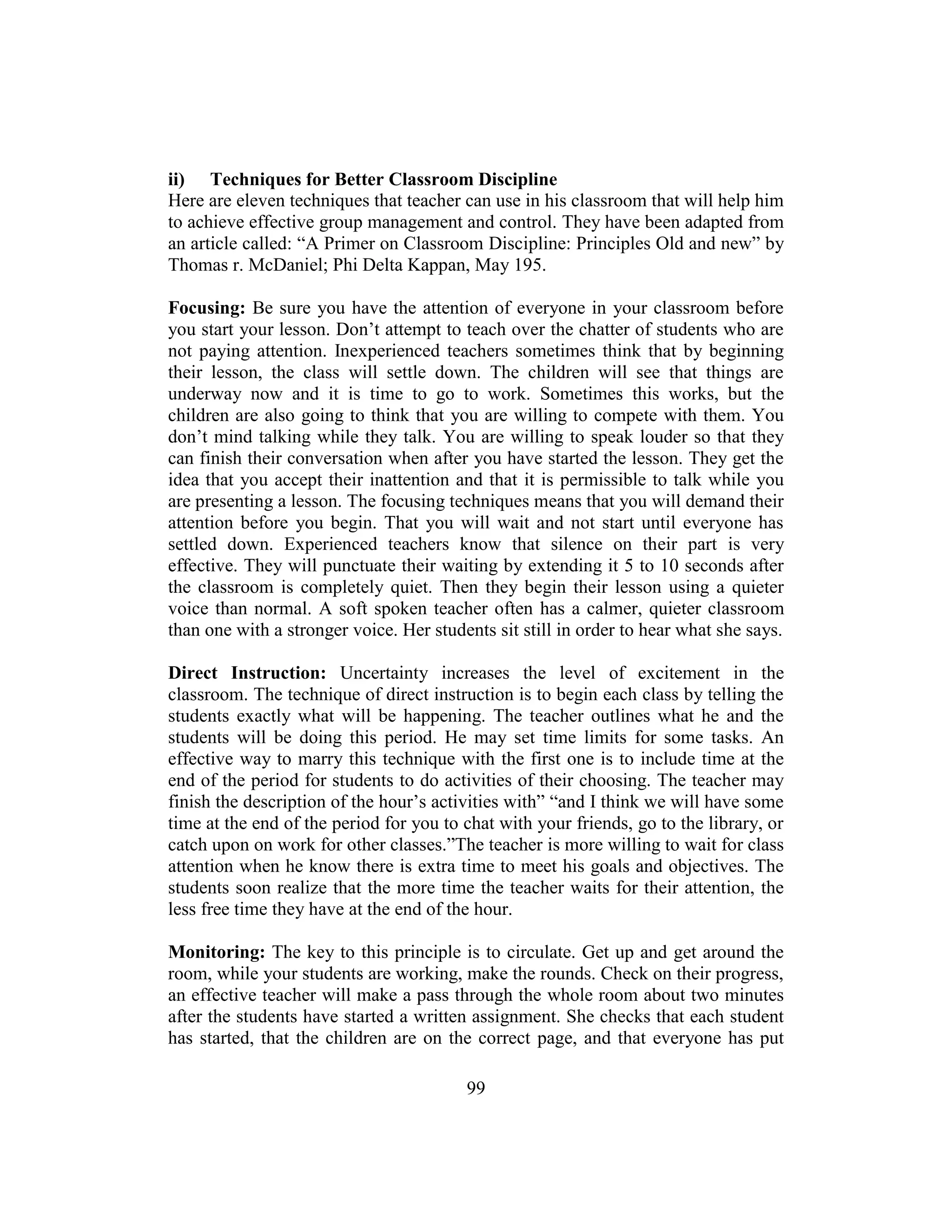



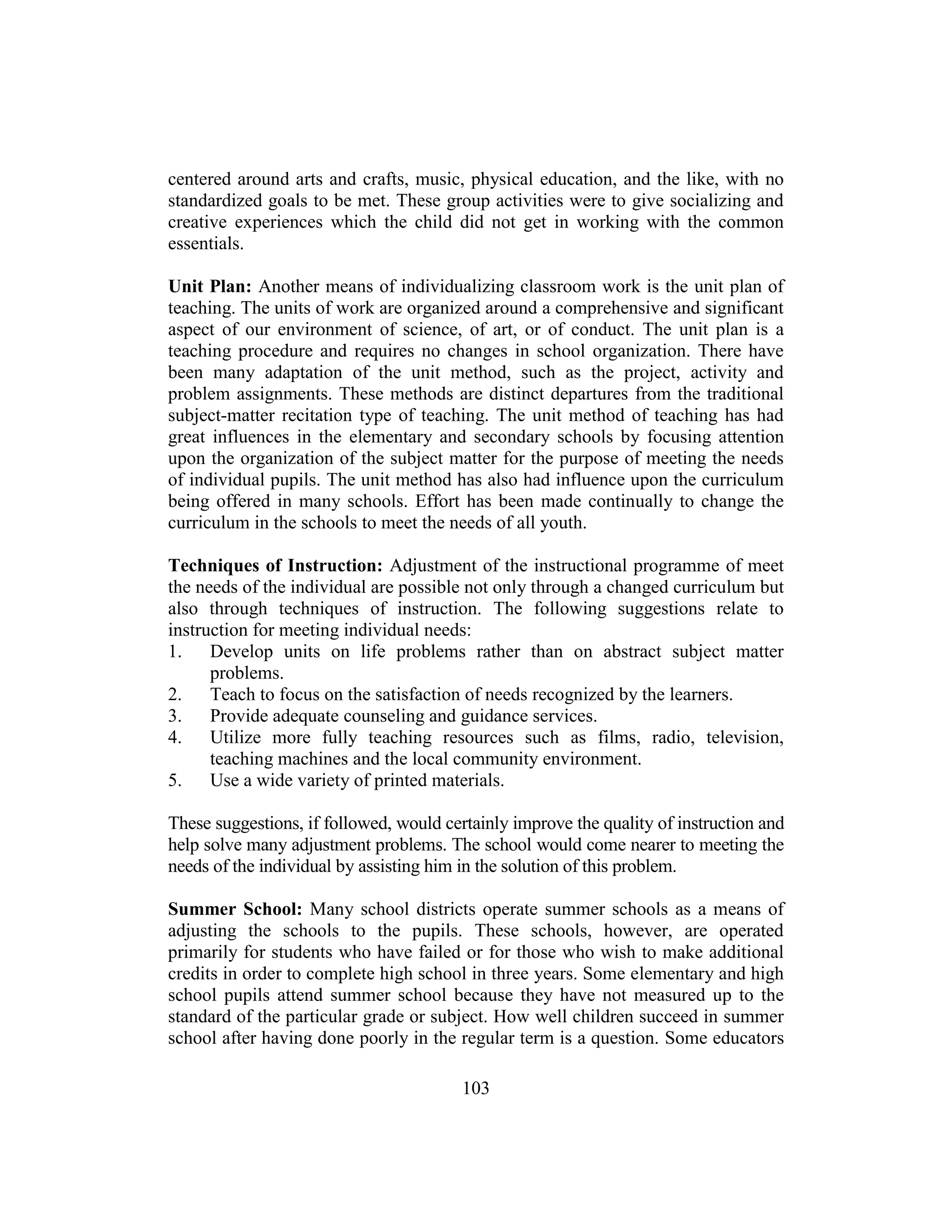
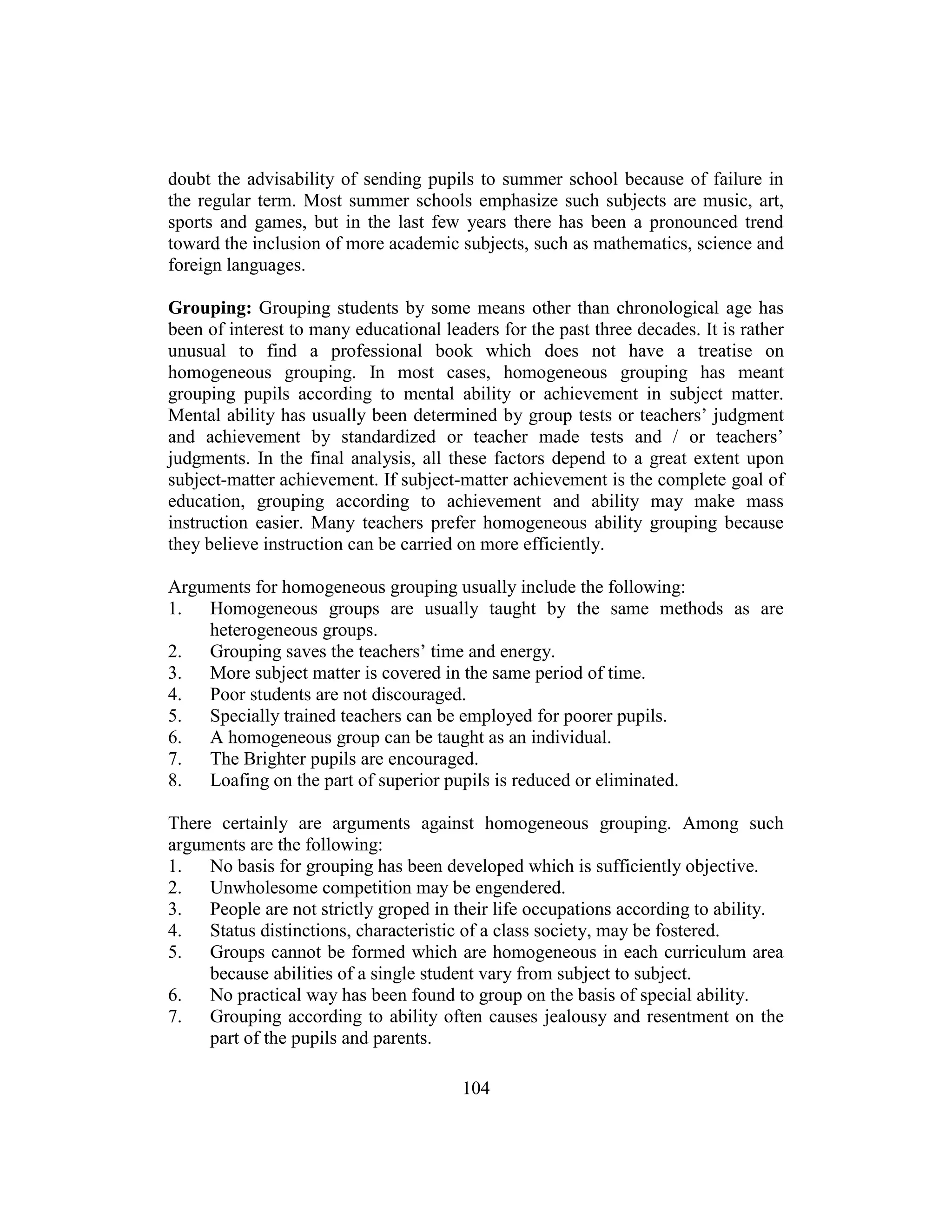
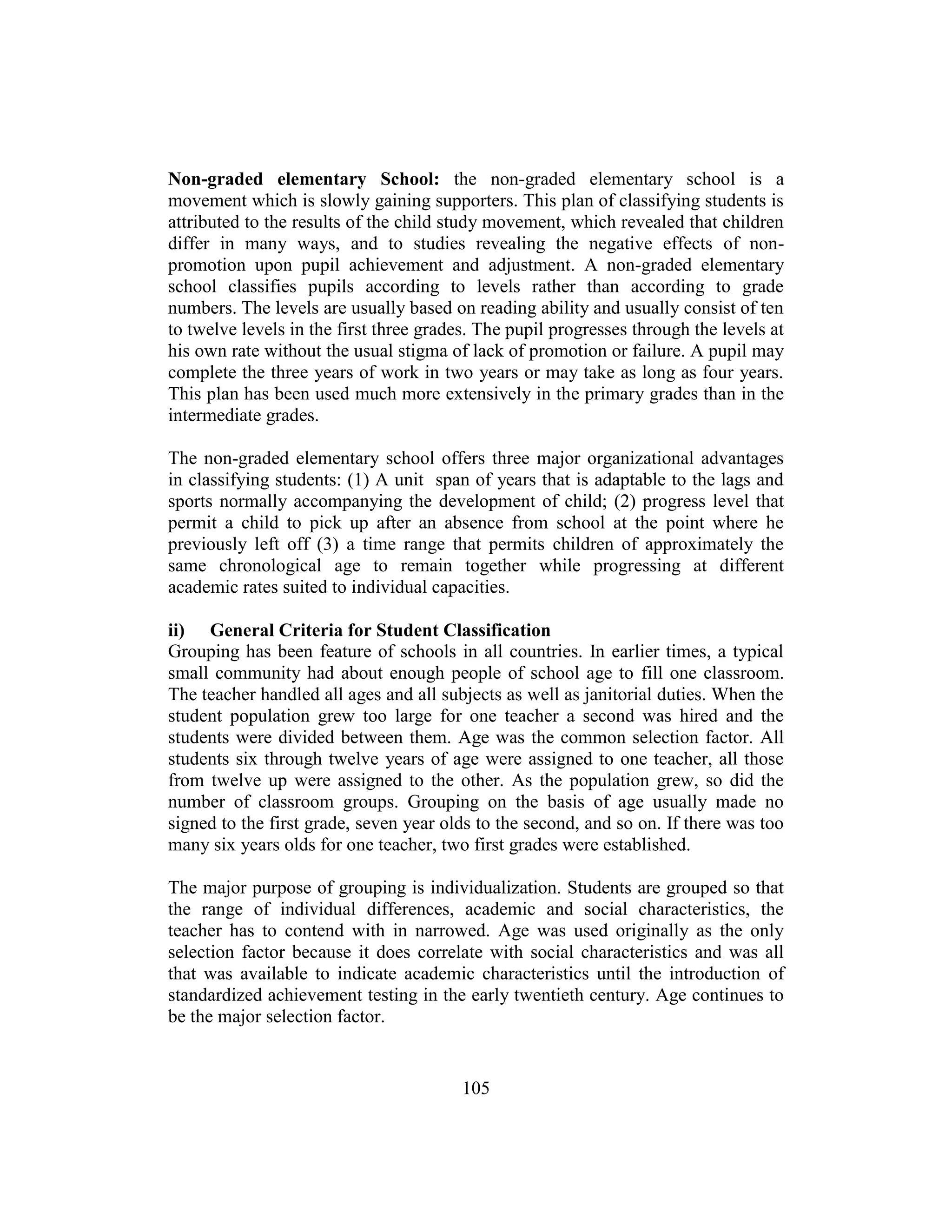
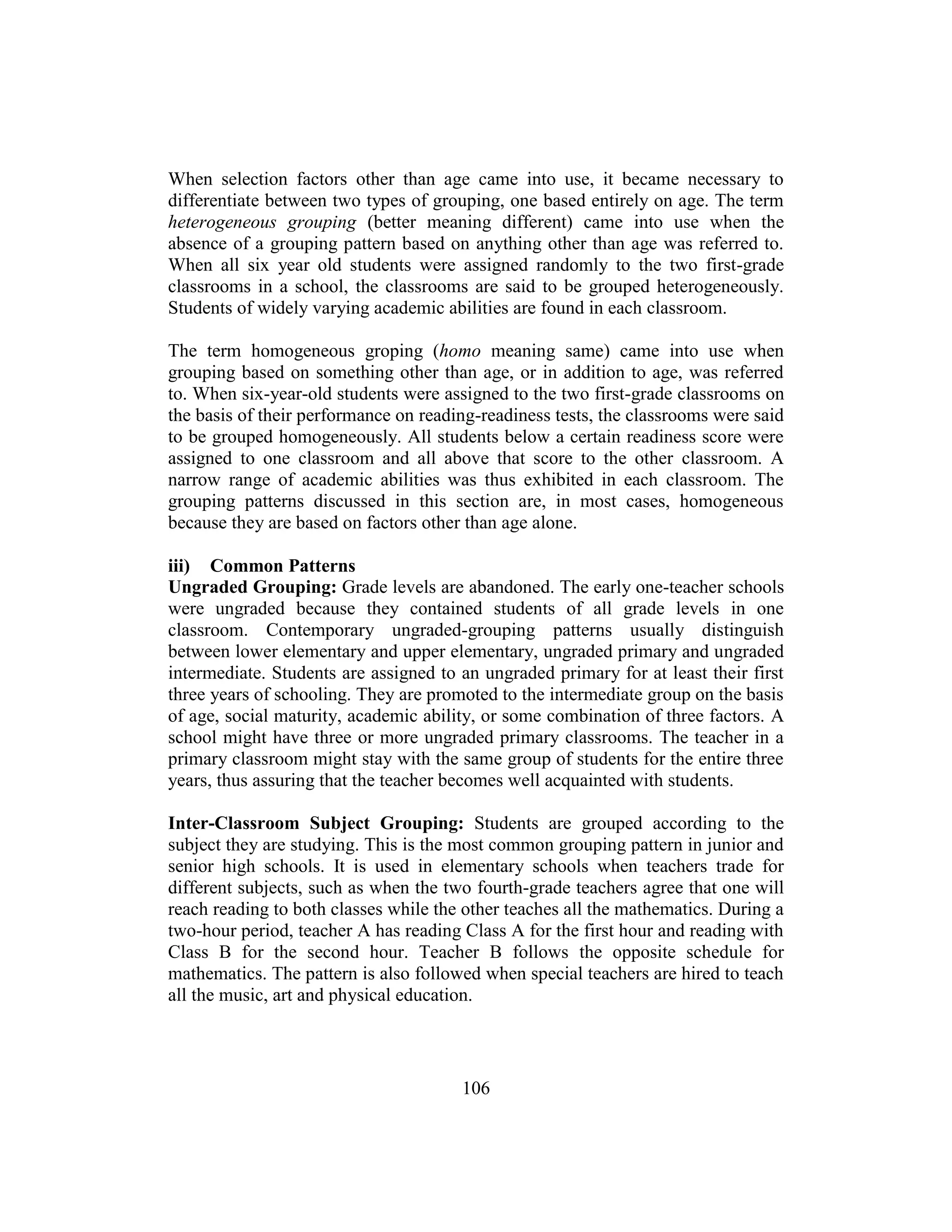





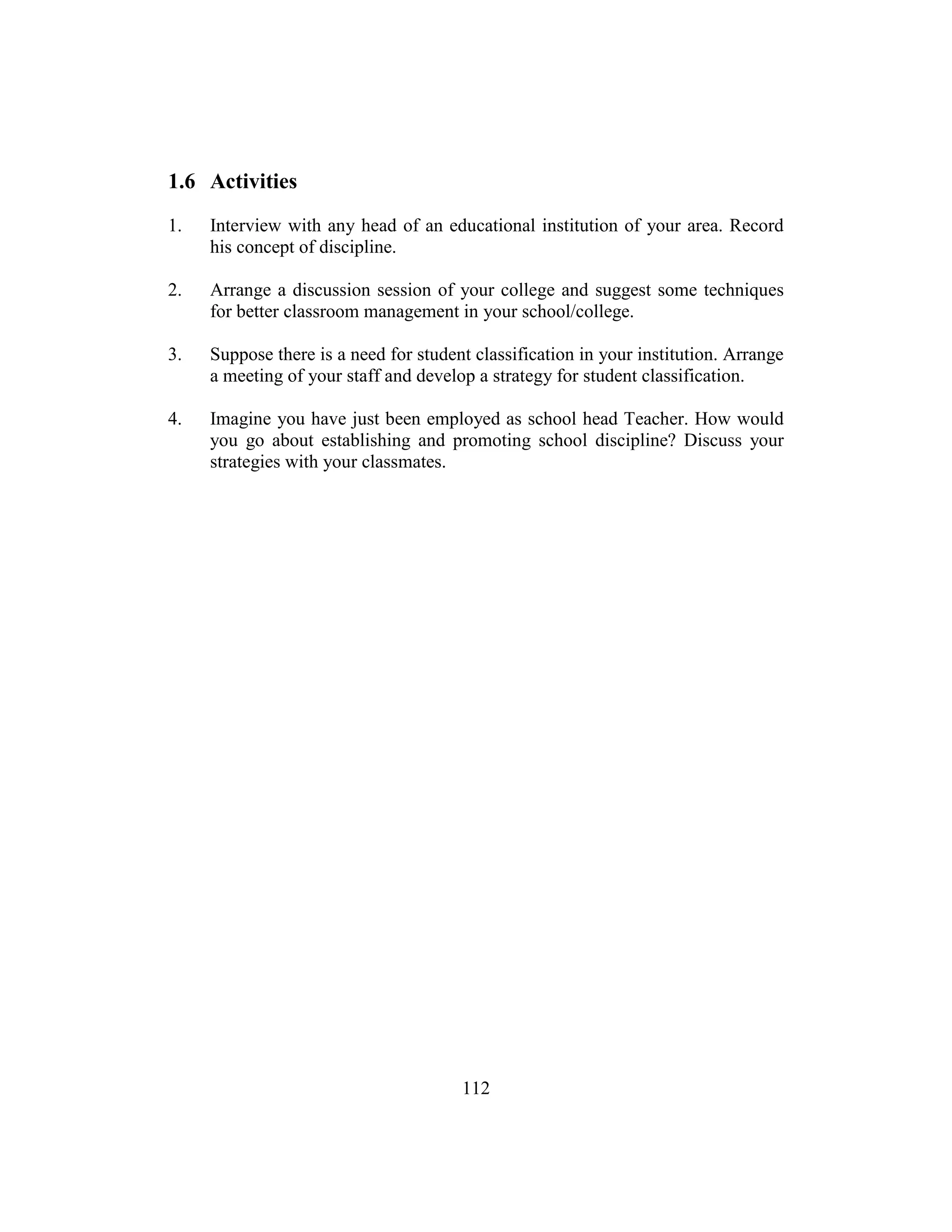

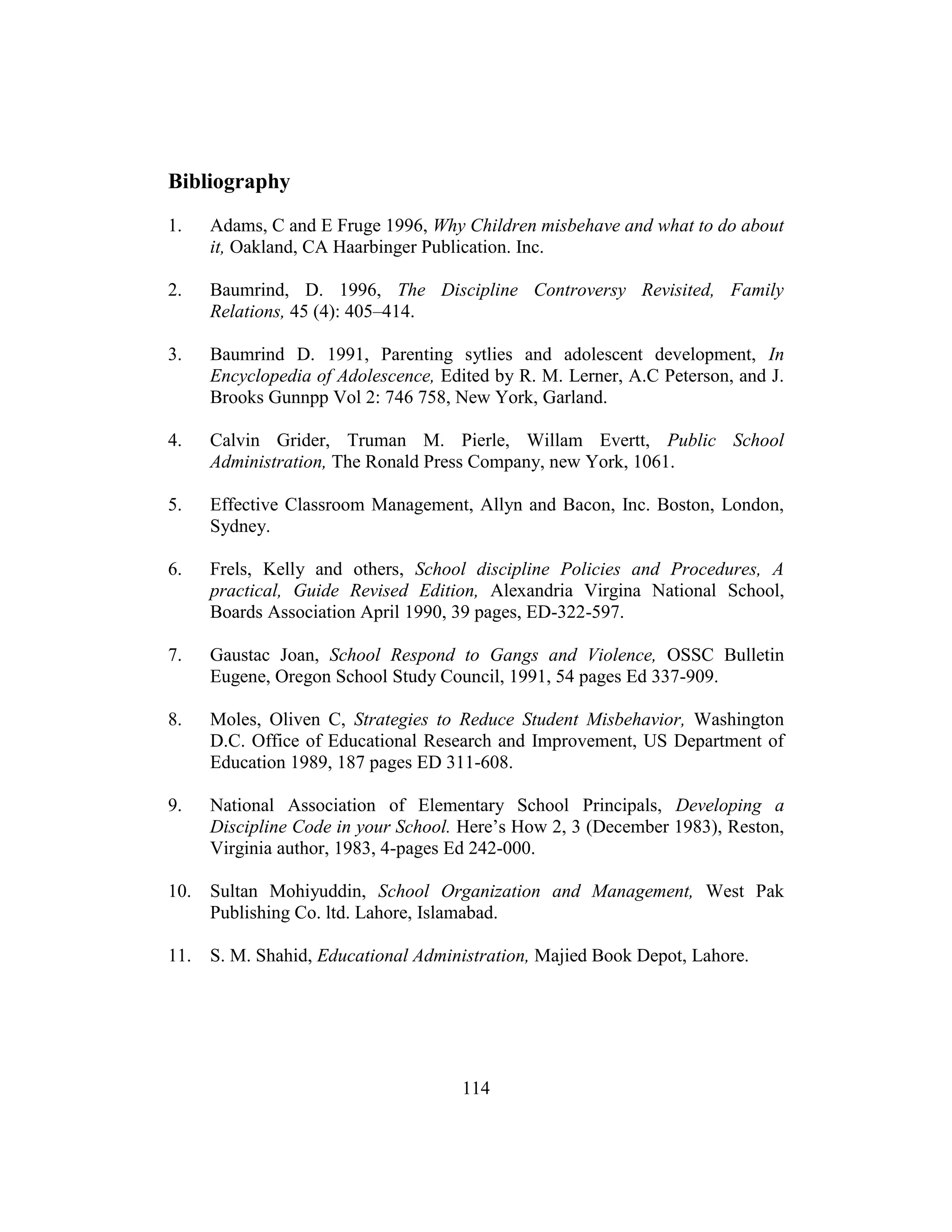










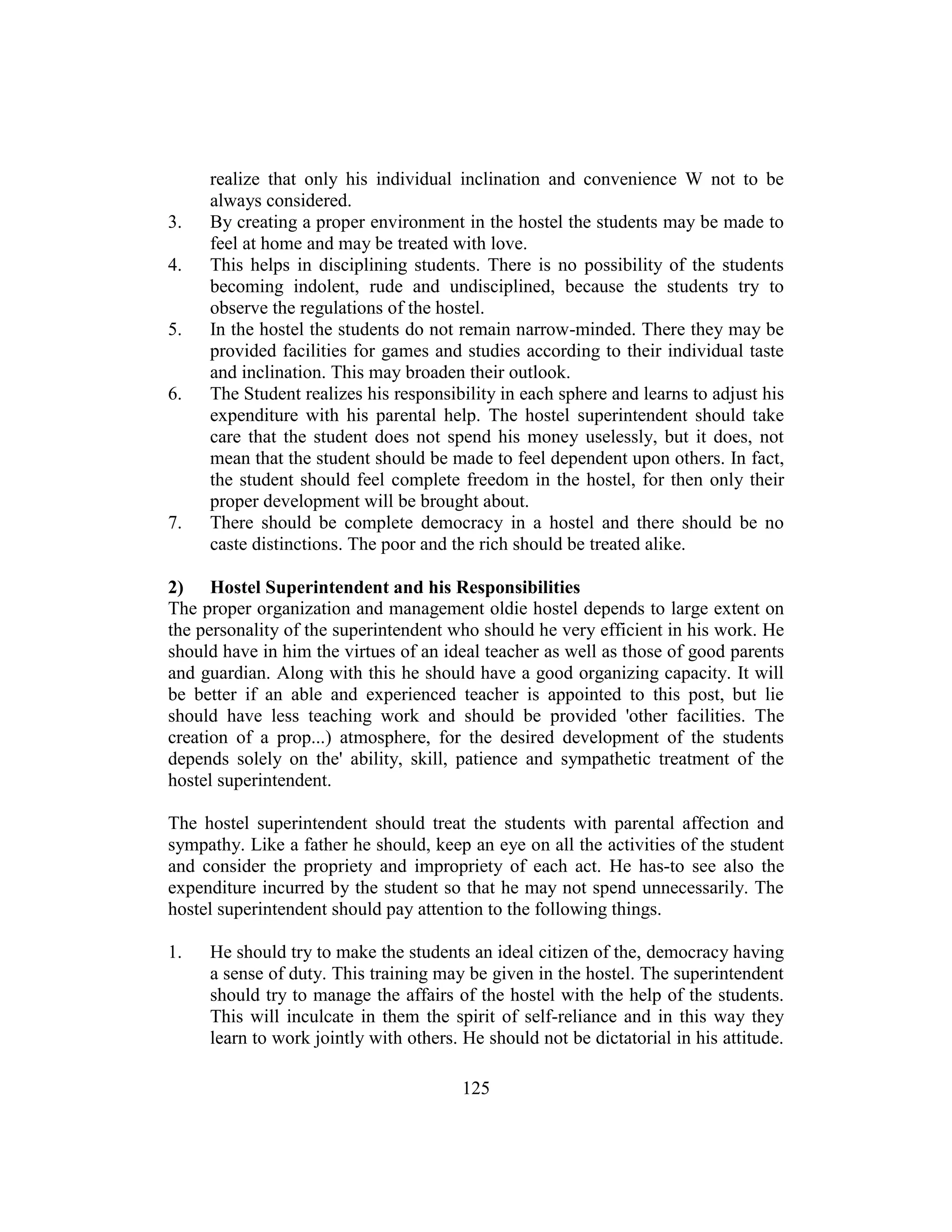



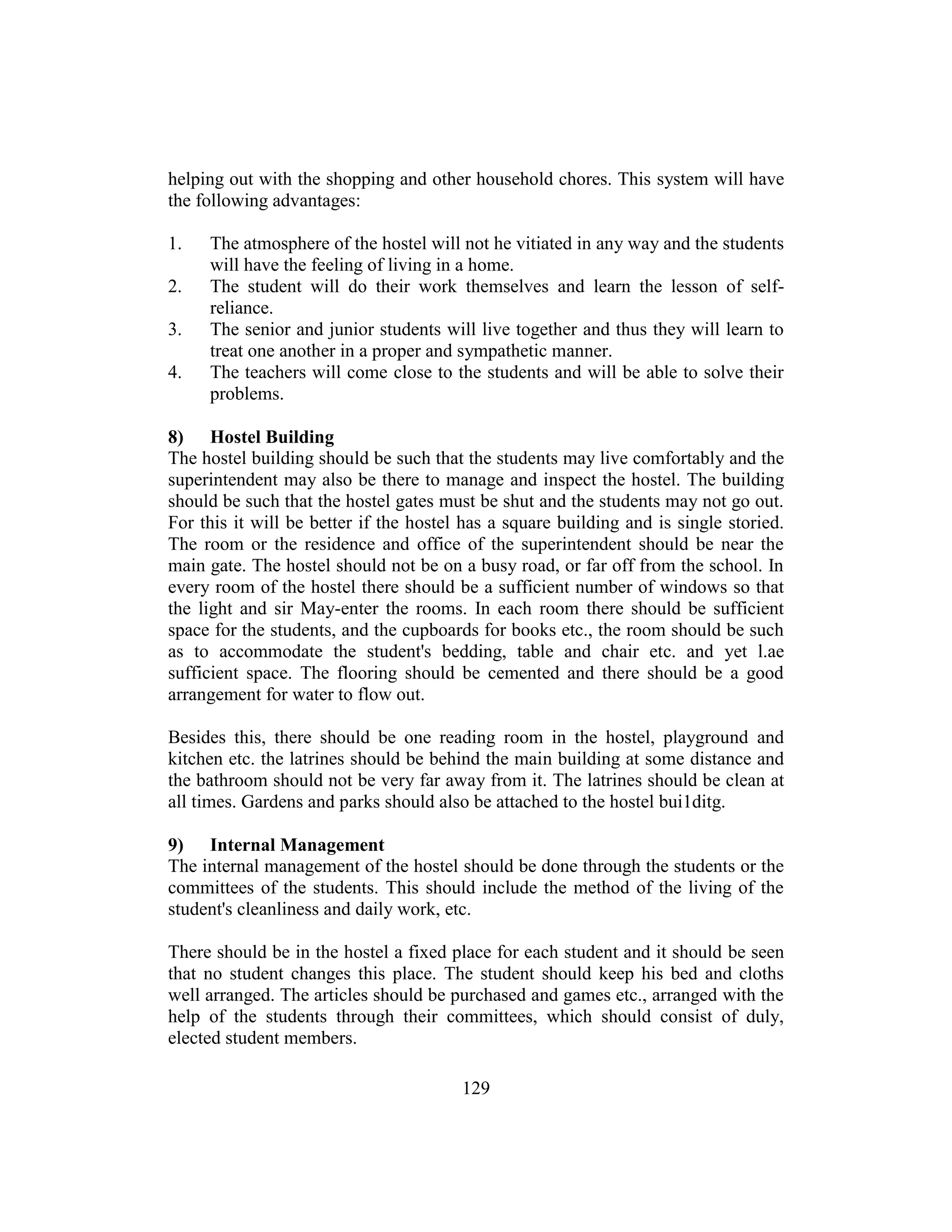



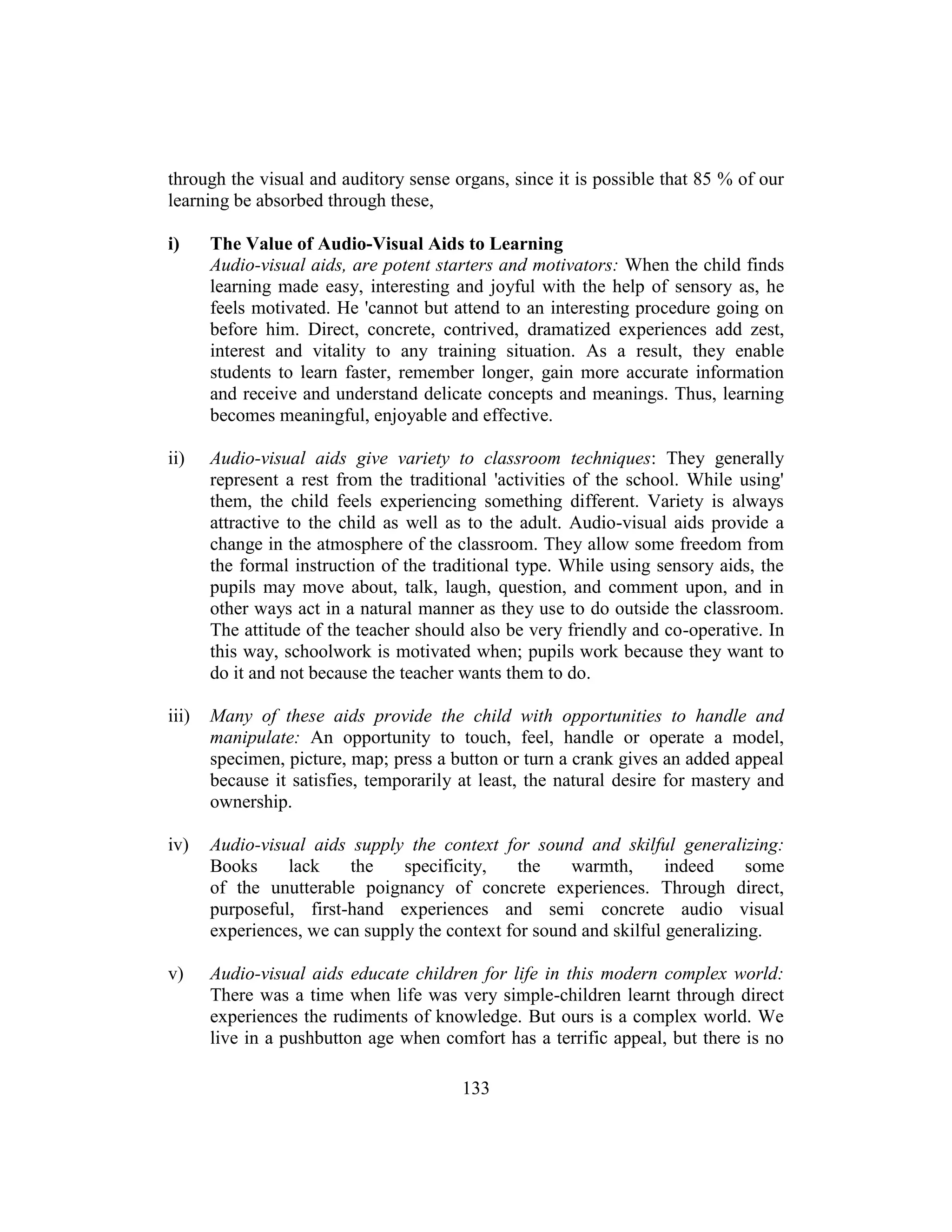

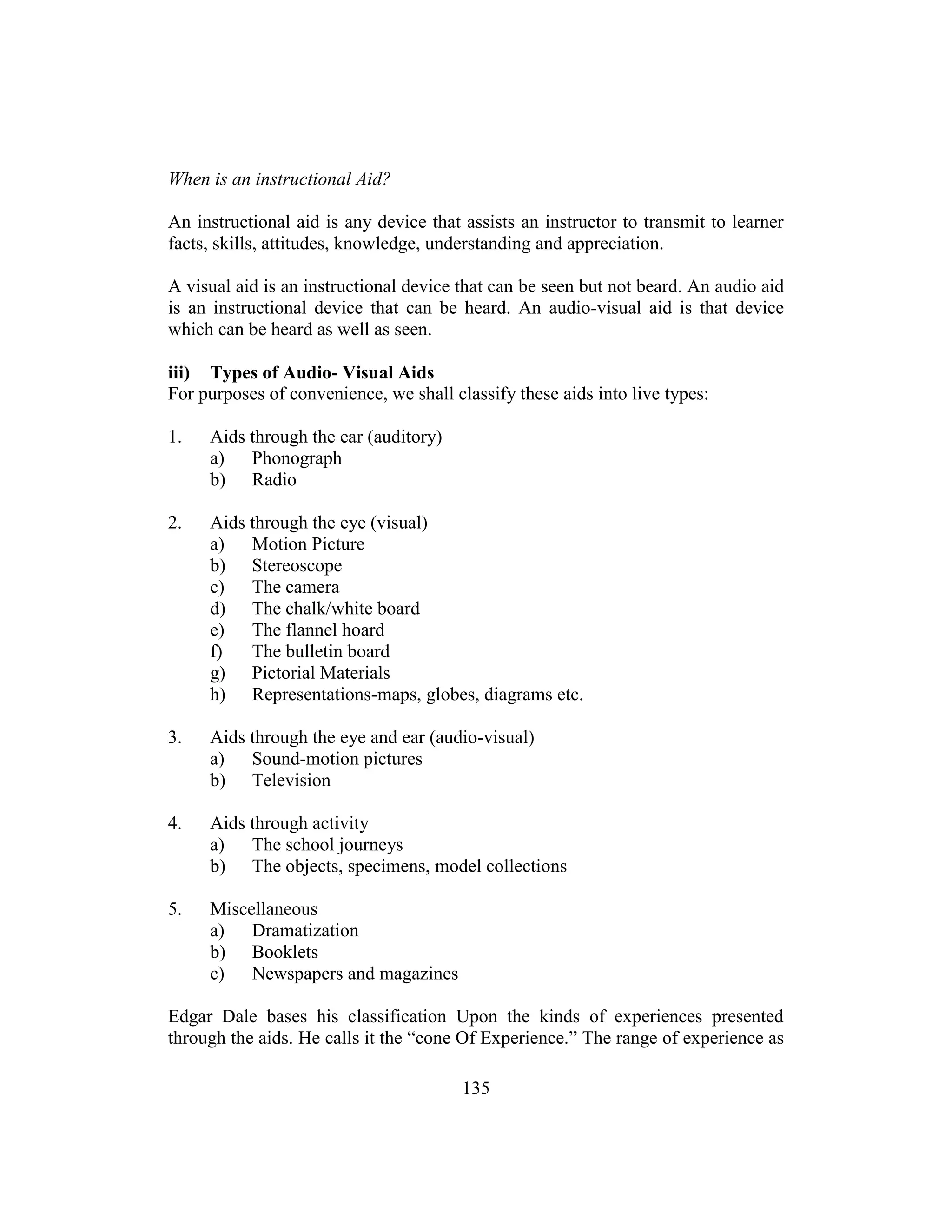



![139
according to the abilities and interests of the students of the class. Class libraries
enable the students to get books easily and to avoid a waste of time. Besides, the
teacher by telling about different books helps to develop in the students varied
interests. Class-libraries will prove very useful for lower classes, because at this
stage the students are not of an age to have a complete knowledge of different
subjects nor do they have any interest in this. Besides, in lower classes onIN1 the
class-teachers can tell the students which books on different subjects are suitable
for them. In the class-library the students should he given facility of choosing the
books for themselves.
Some students get books issued from the library but they often return them
unread. Hence the teacher should find out shelter the student has read the book or
not. It will be good if record is maintained showing the number of books a student
reads during the course of the year. All the hooks, which a student reads, should
be listed on a page: which should also indicate the date of issue and return. Thus
the teacher will be able to create a taste for reading in that student who does not
have such a taste. The teacher should also see that the home task assigned by them
should be as may require the student to read books from the library.
The student should have such notebooks in which they may note down the titles
of the books they read summary of the book as also their own ideas about the
same. The student should be provided with an opportunity to discuss in the class
the books they have read. A student who properly reads the largest number of
books in the year should be rewarded. It is very necessary for the students to make
a summary of the books read because if the important facts are not noted down
they will soon be forgotten. It is necessary to the teacher ;]so to have knowledge
of those books, which the student read for, then only he will be able to understand
the viewpoint of the students and to participate in the discussion with them.
iv) Classification and Arrangement of Books
The books in the library should be properly arranged and classified as they have
as great an importance as the library itself. The importance does not consist in
storing a large number of books as in having suitable hooks in a proper order. In
this connection attention should be direct towards the utility of books. For this it
is necessary that the teachers should consider the contest of the hooks. These
books should be according to the capacity and ability of the student is able to
understand a hook he feels encouraged to read other books as well.
The significance of a library does not lie in possessing such books of great author,
which the student cannot understand, but in the collection of such books, which
the student of different levels can fully utilize. There should be more than one
copy of the books, which are useful from the point of view of the students. It is](https://image.slidesharecdn.com/8605-240214112737-e3187060/75/Supervision-Management-and-Administration-146-2048.jpg)

